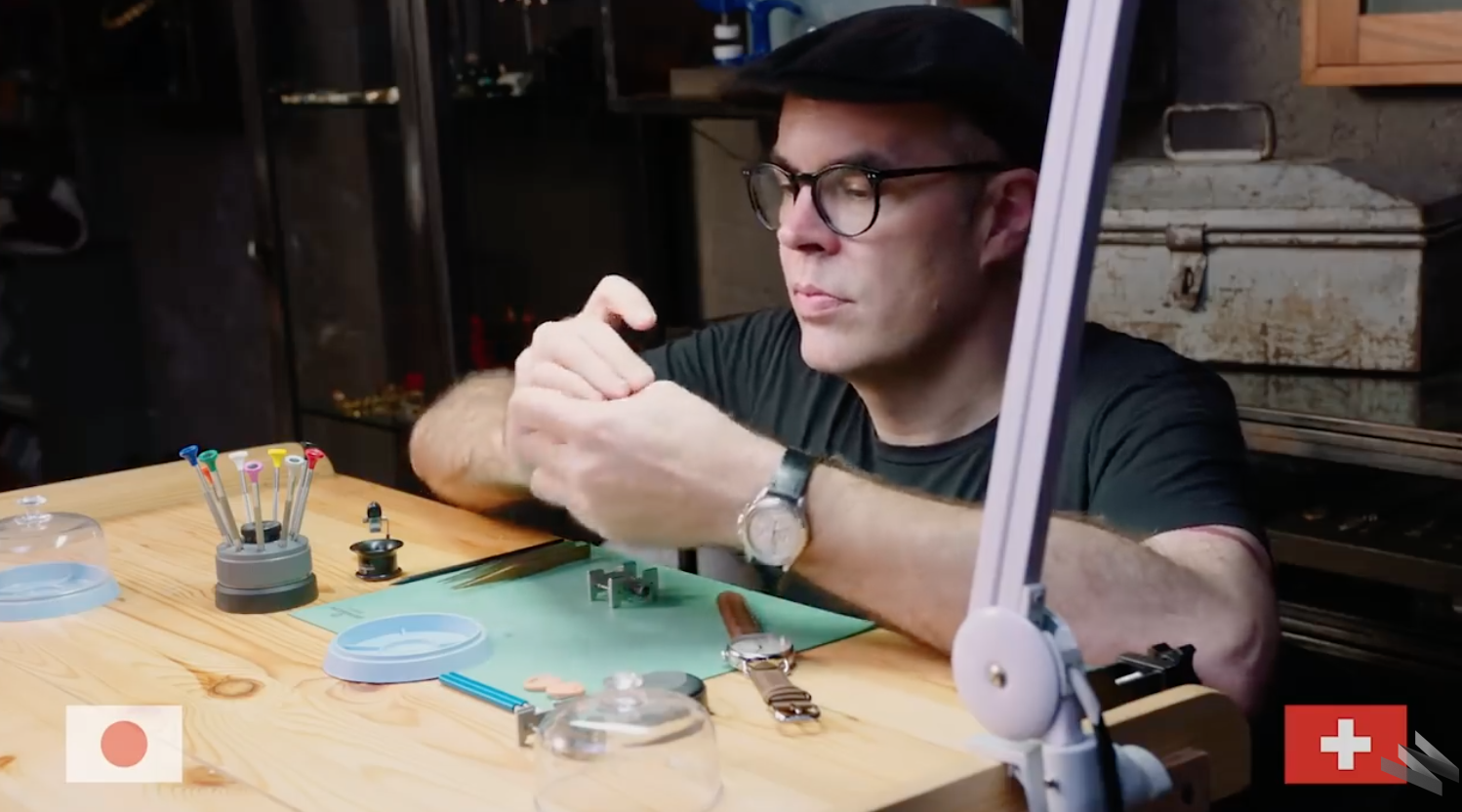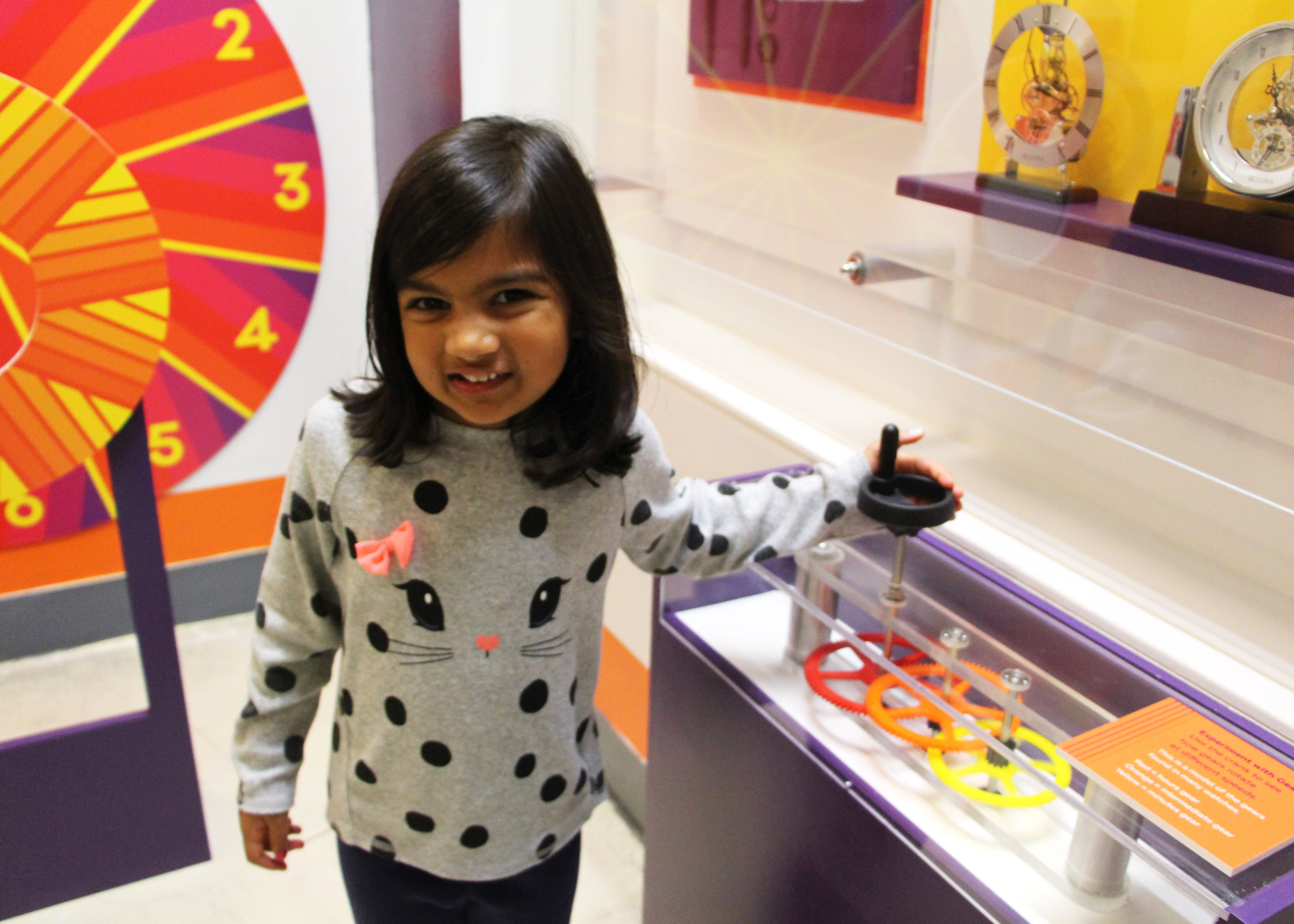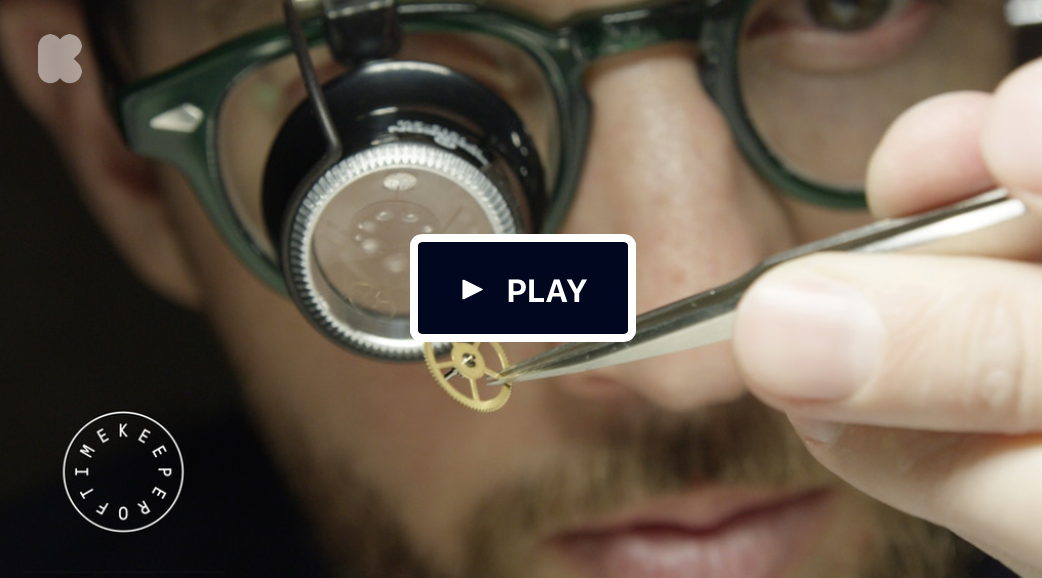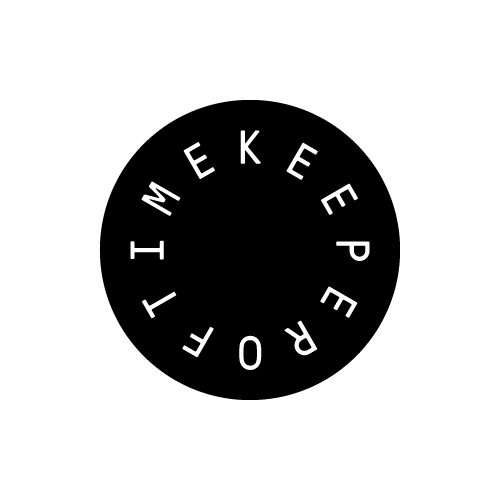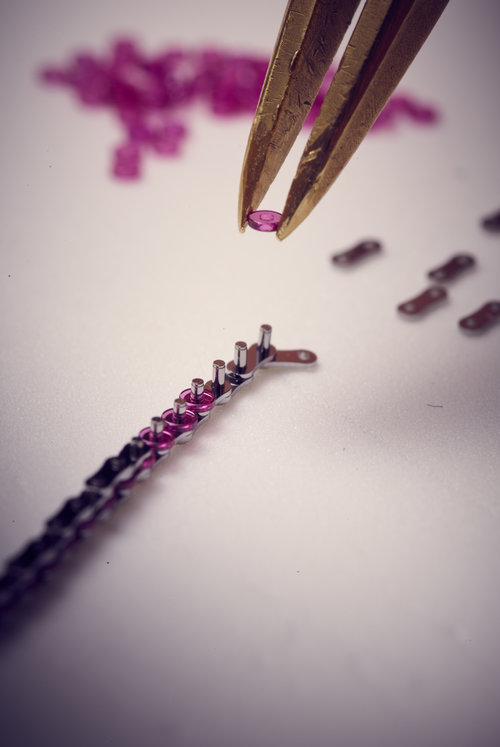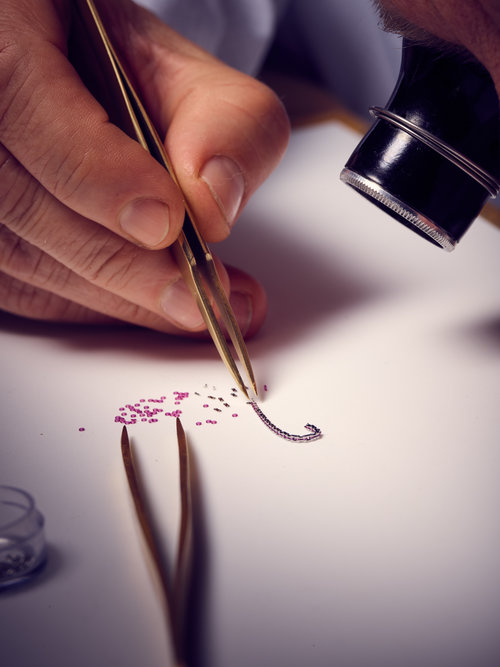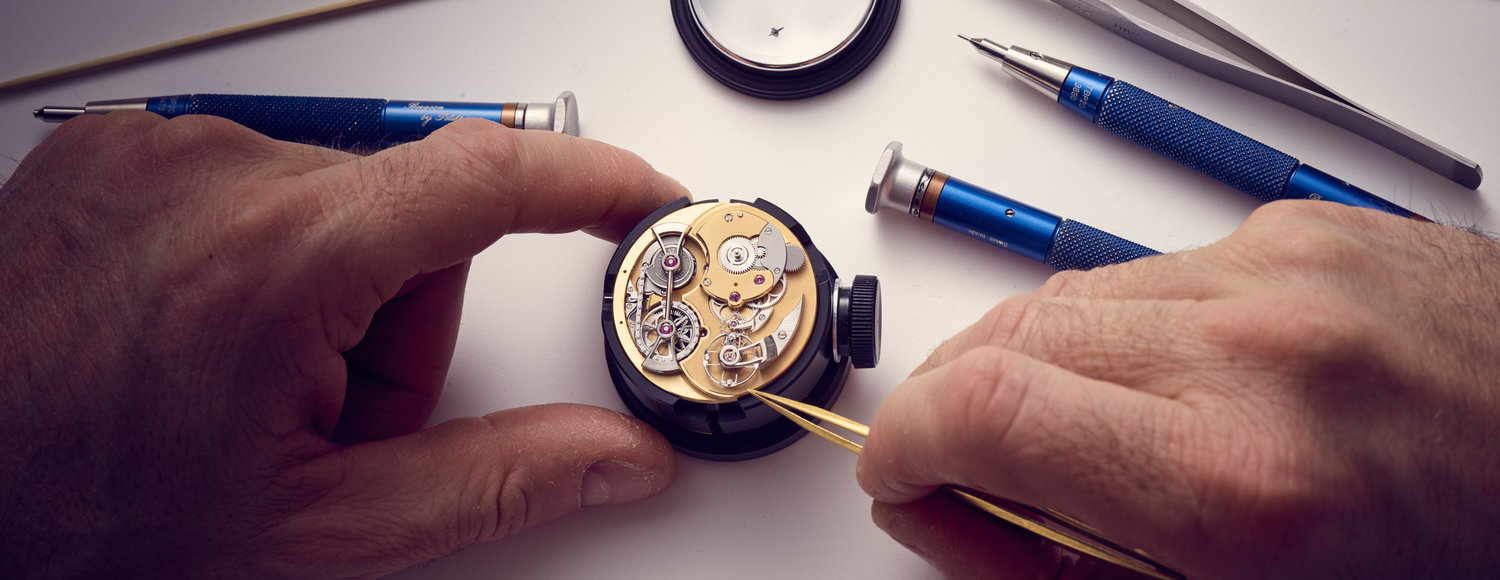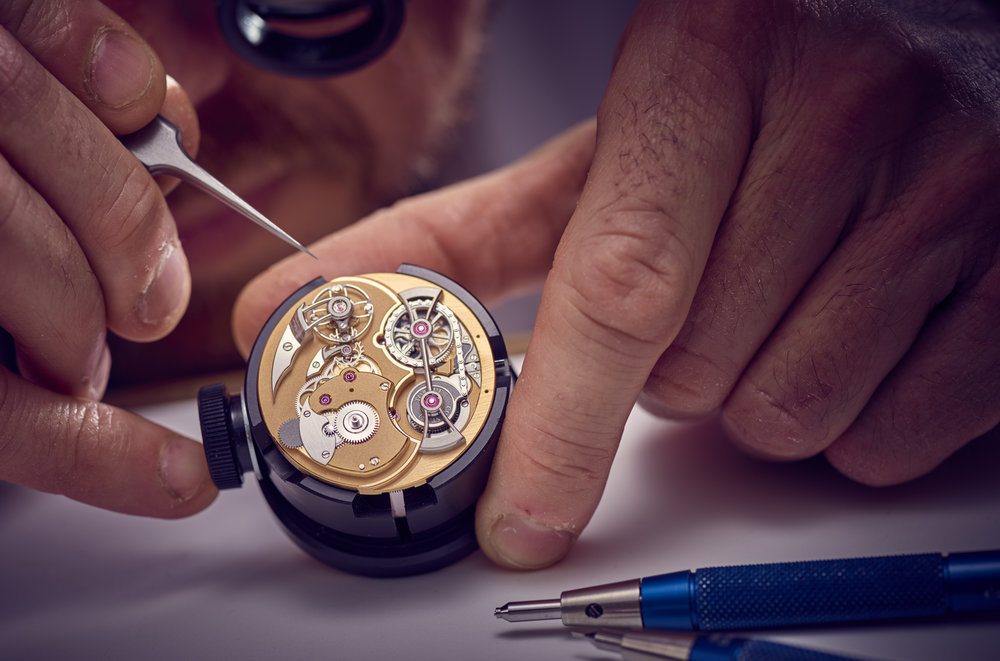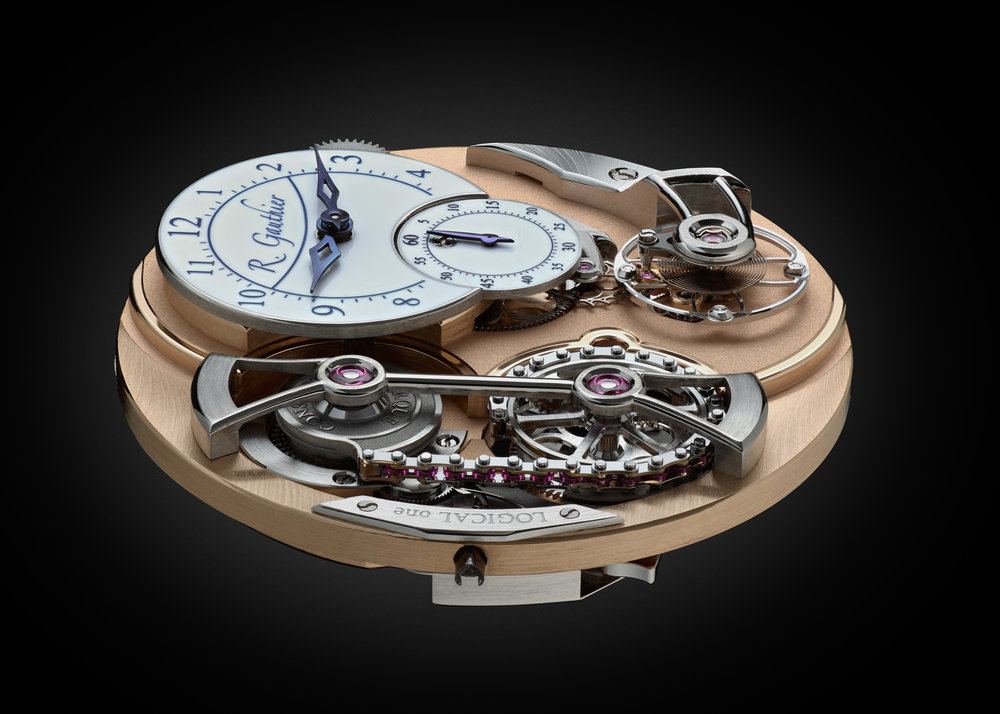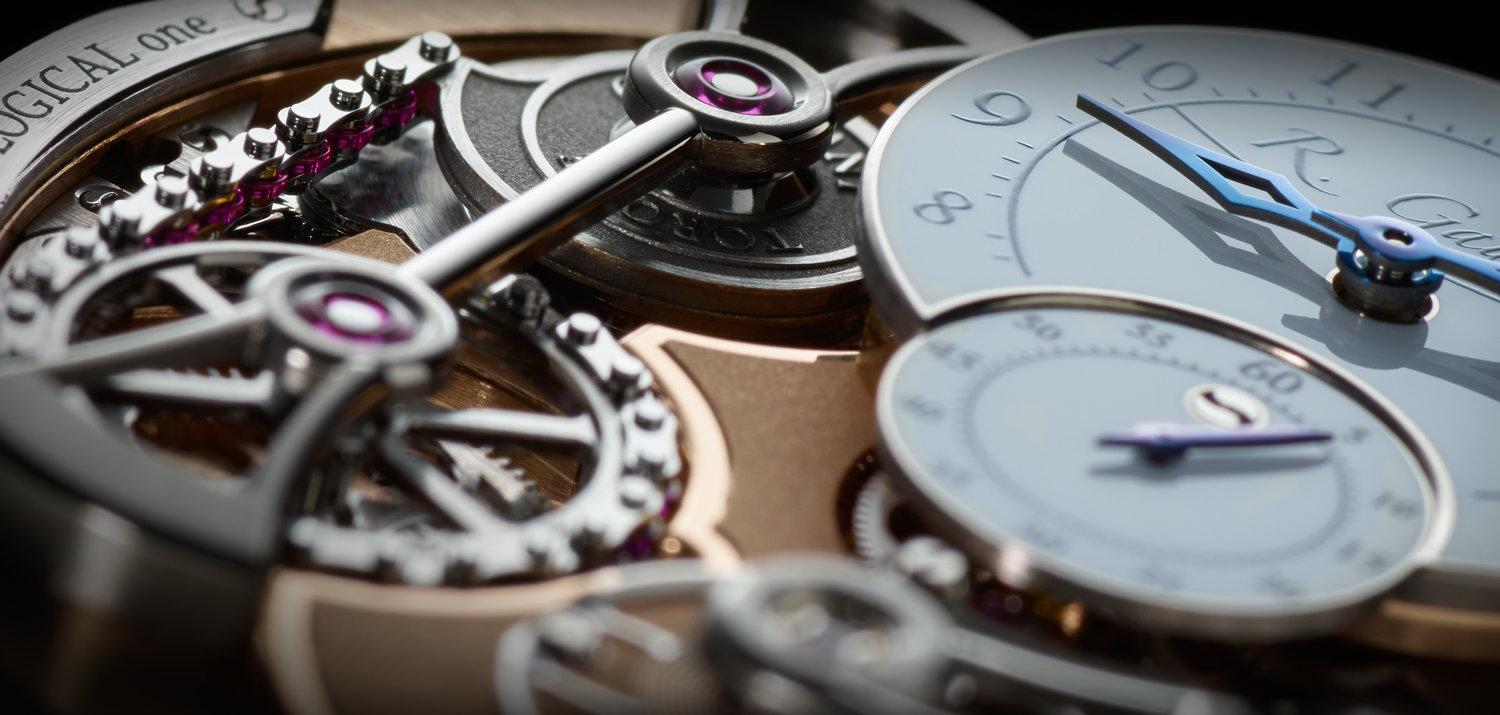
The Horologist’s Loupe
The Horological Society of New York's newsletter (and today blog!) began publishing in 1936, and is one of the oldest continuously running horological publications in the world.
Meeting Recap: Tradition and Innovation – a Contradiction?
Video recordings of lectures are available to members immediately (using your membership password), and the general public with a 2 month delay.
Andreas Strehler, Watchmaker and Owner of UhrTeil AG
December 3, 2018
Tradition. Innovation. These are words to describe what makes a brand stand out and signify what they stand for. And yet, those same words become rather intriguing when they are presented as being in conflict instead of complementary.
In the final lecture of the year at the Horological Society of New York on December 3, 2018, Andreas Strehler, Watchmaker and Owner of UhrTeil AG, contended that watch brands need to reconsider their notion of tradition and innovation if they want to remain relevant to current and new customers.
Tradition has a lot to do with history...
Strehler stated that the main goal of tradition is to maintain value - not just monetary value - but historical and technical value. The risk of too much tradition would lead to market saturation, lack of creativity within the brand’s collection and being out of fashion in the eyes of evolving customers. This conundrum was clearly illustrated by images of 28 gold clocks that differed by either a steeple or a dome.
Innovation applied to a traditional watch
Like with most topics, it all depends on how you choose to look at a situation.
Innovation Advantages: The creation of solutions for existing problems, new functions and increased reliability.
Innovation Disadvantages: New problems can arise, for example a drop in value if it becomes typical to each brand and is only repairable by replacing parts. Strehler referenced the 2006 Patek Philippe and the 2017 Tissot to illustrated such dilemma. He also provided an anecdote when he experienced a restoration issue on a 1940s Rolex. The company no longer had the part necessary for Strehler to restore the timepiece and in the end, he had to make the part himself. There were also examples of applied innovations to traditional watches such as the lever escapement and innovations that did not increase value, i.e. silicon escapements. Metal can be re-bent and polished - not so much with silicon.
In regards to being owner and watchmaker of his engineering and production company UhrTeil AG, Strehler embellished on his six-point approach on how he intends to keep his watch brand relevant. One of the approaches is to have “all documentation conserved for future watchmakers”. He strongly believes that the only way his brand can outlive him is to make sure that watchmakers know how to repair his specific timepieces, with the help of thoroughly documented phases of a timepiece’s life.
HSNY thanks Andreas Strehler for his lecture!
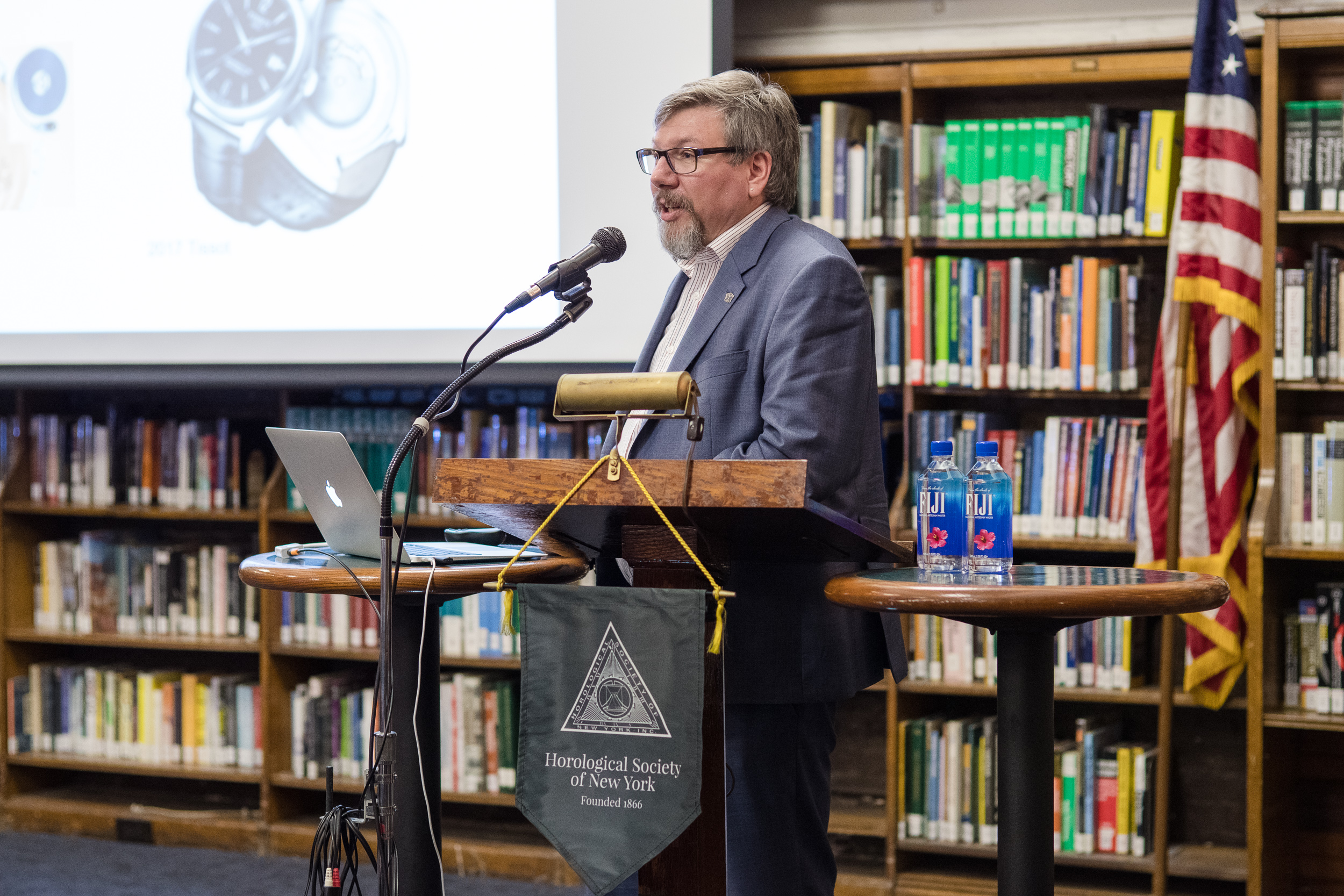
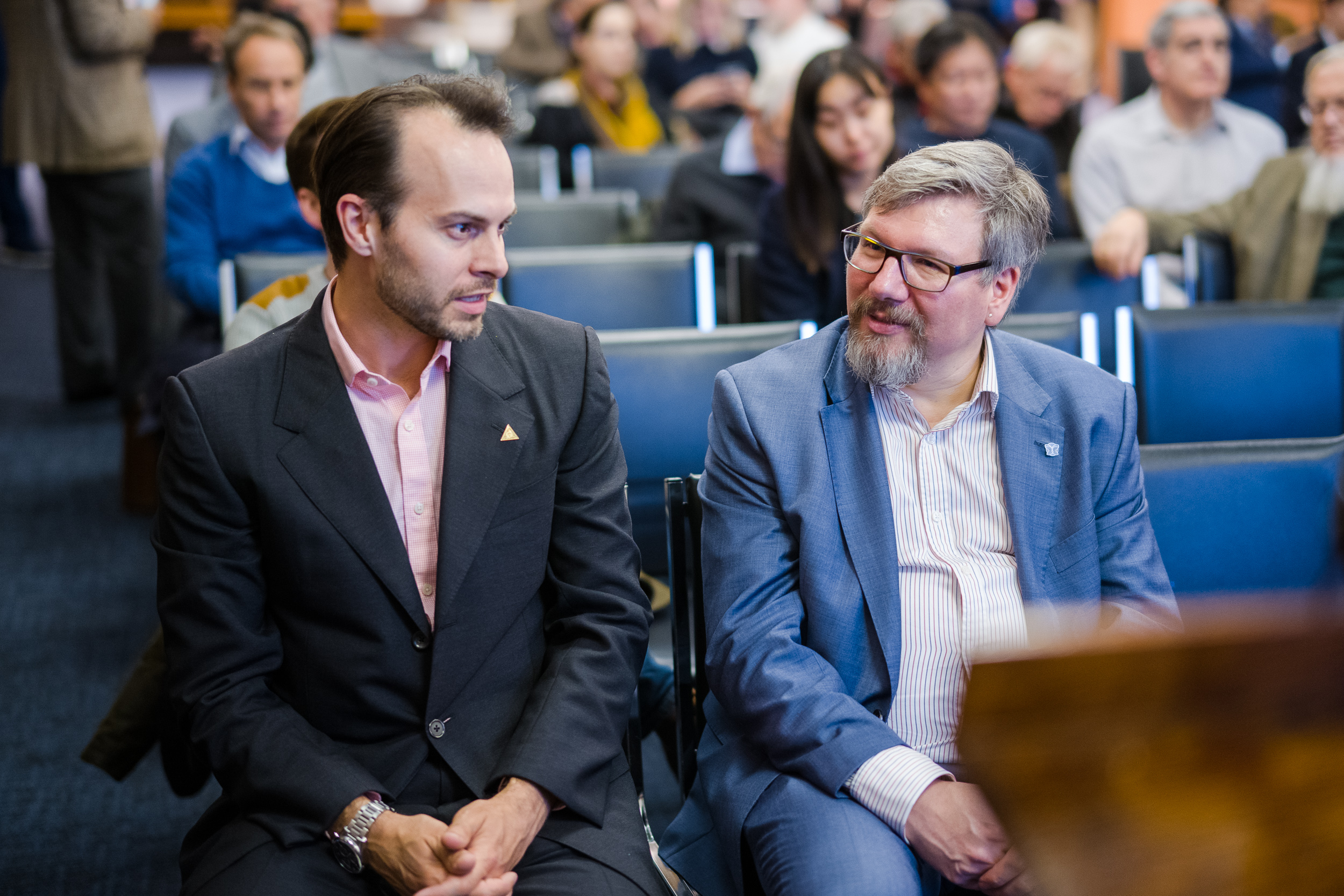
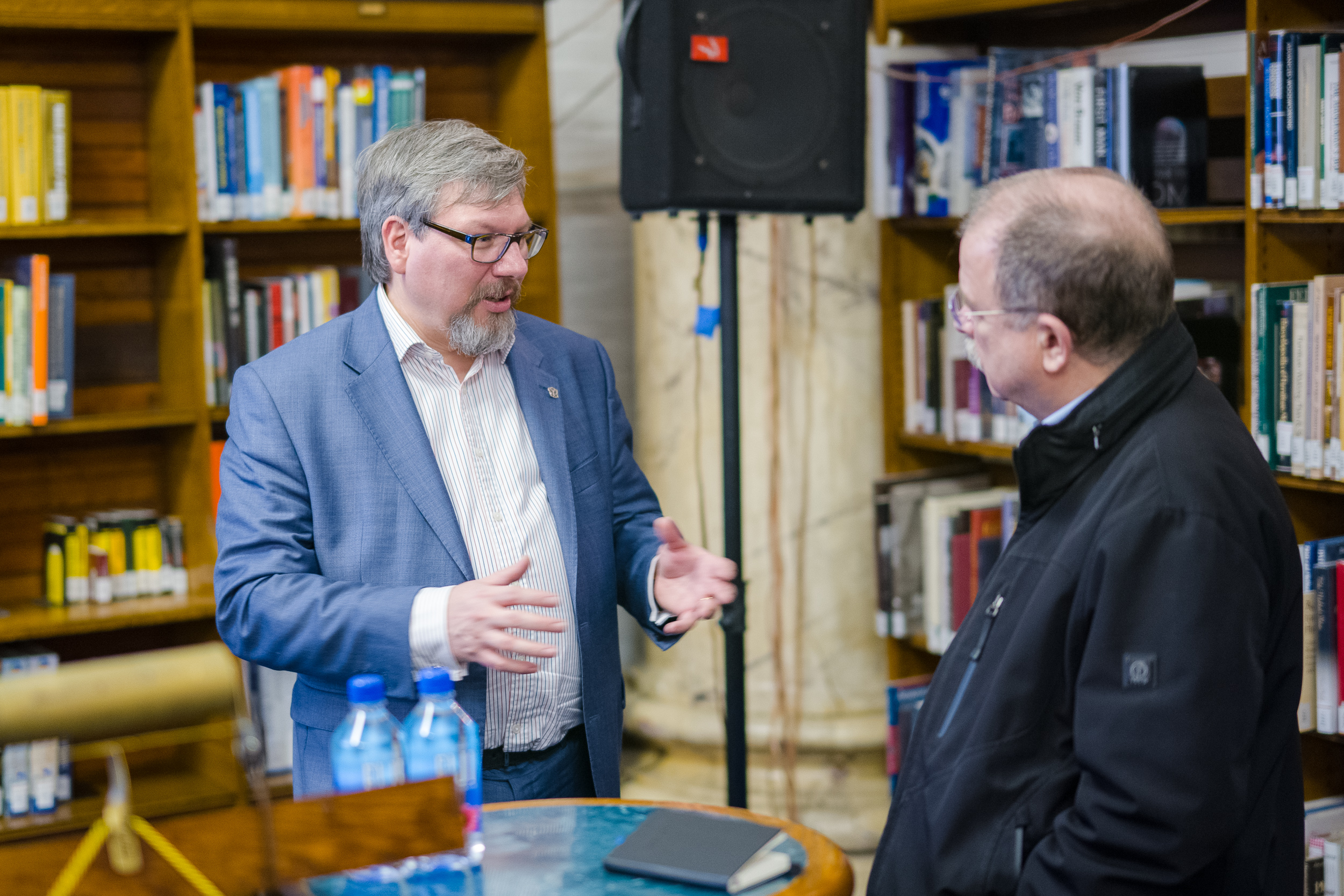
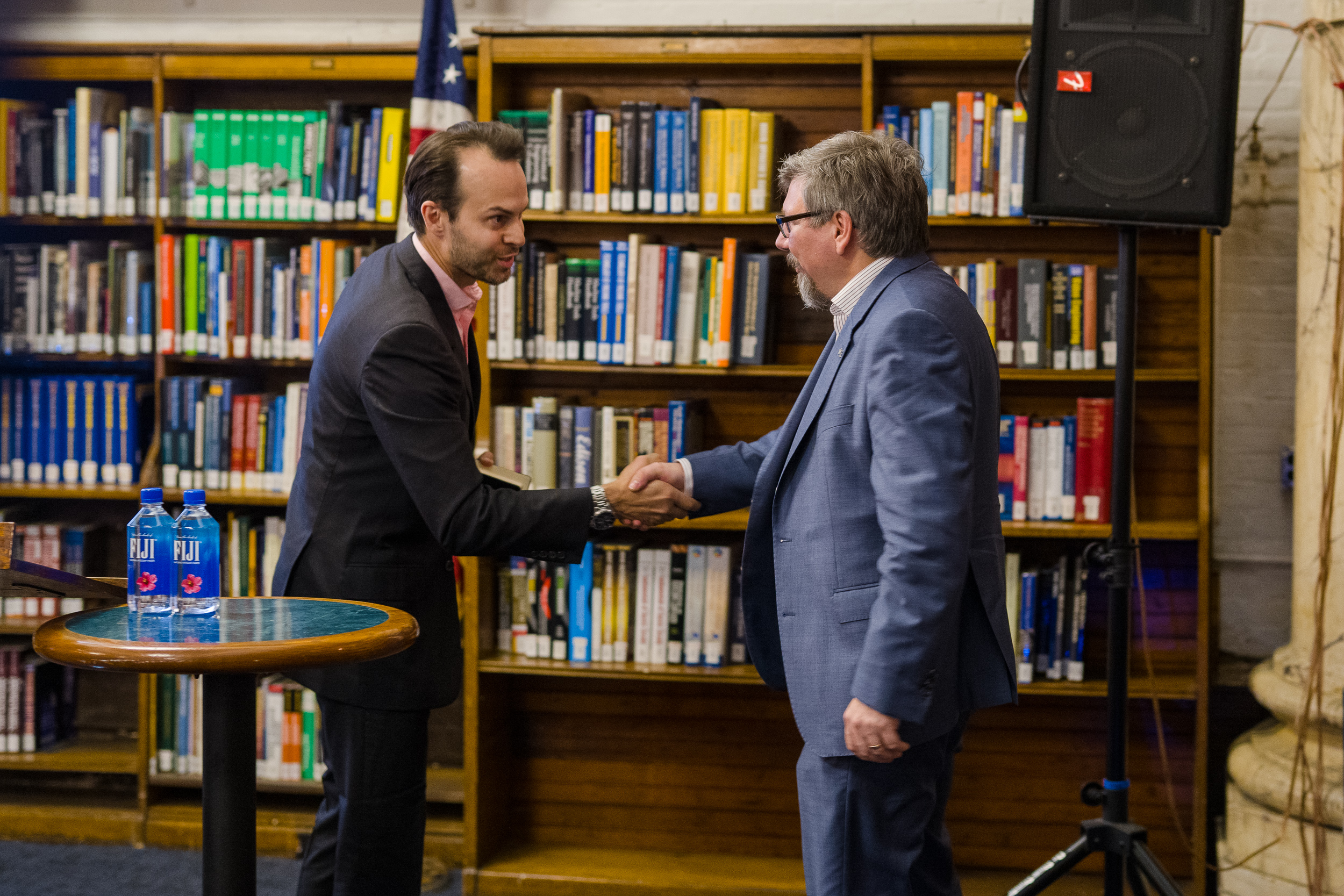

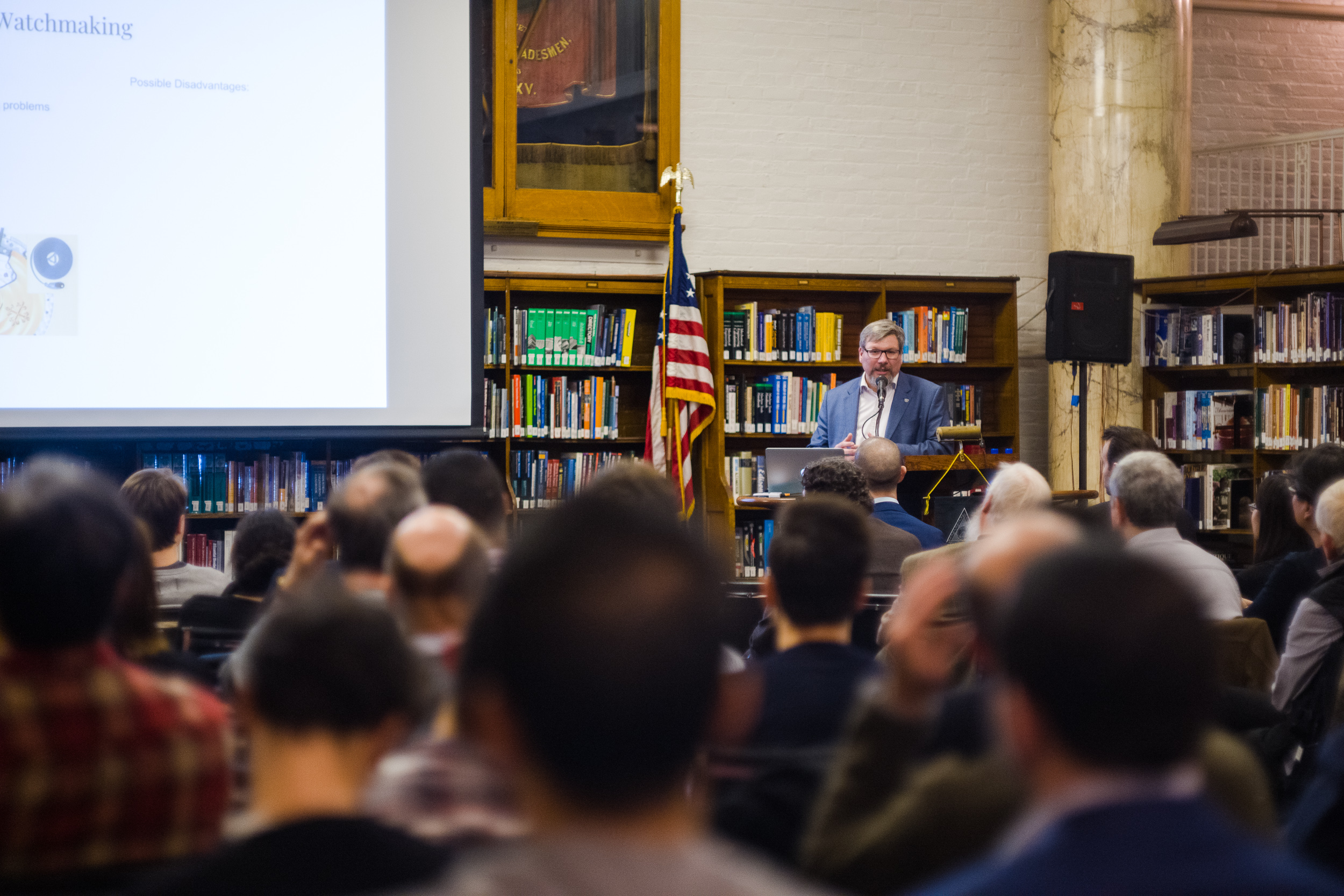
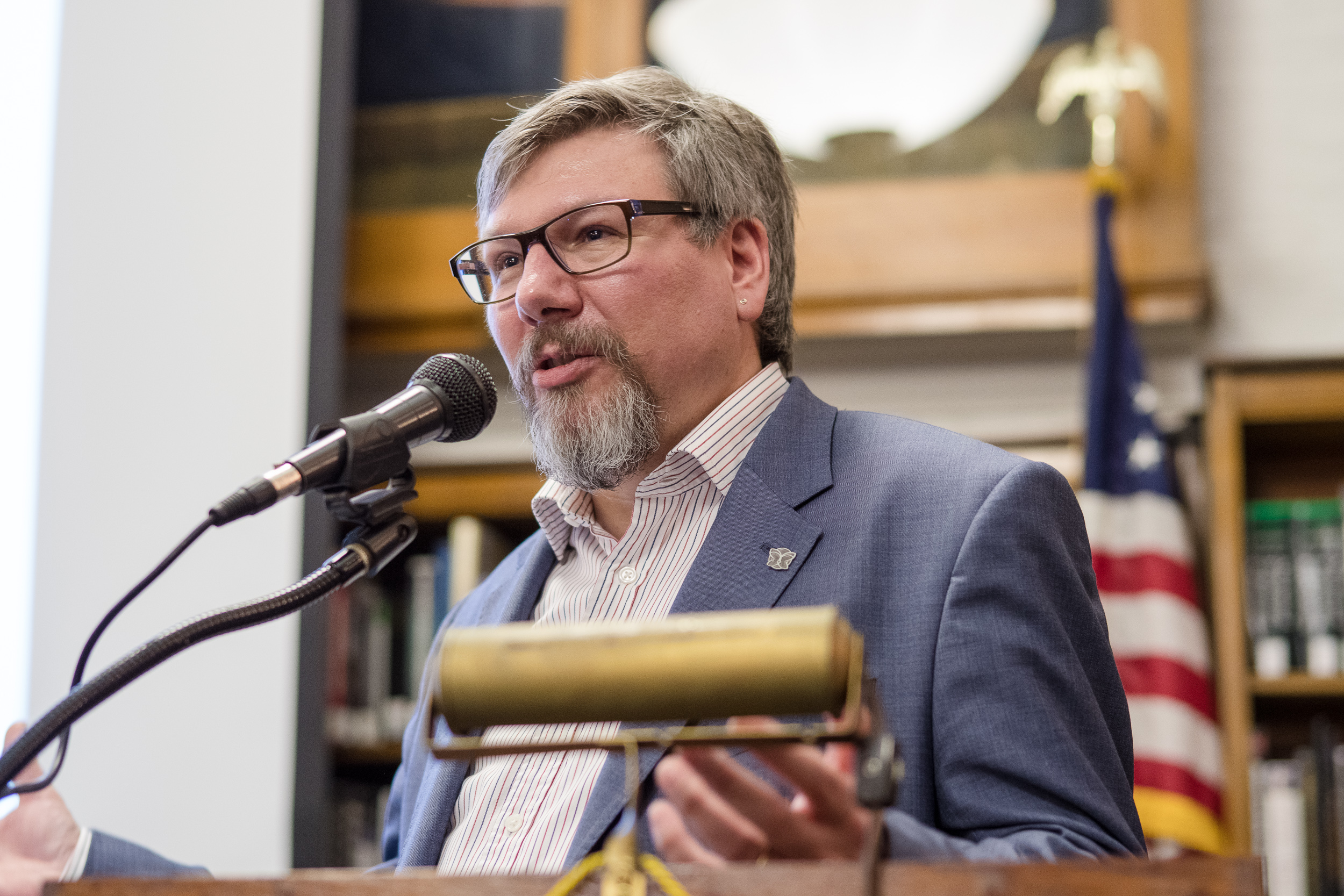
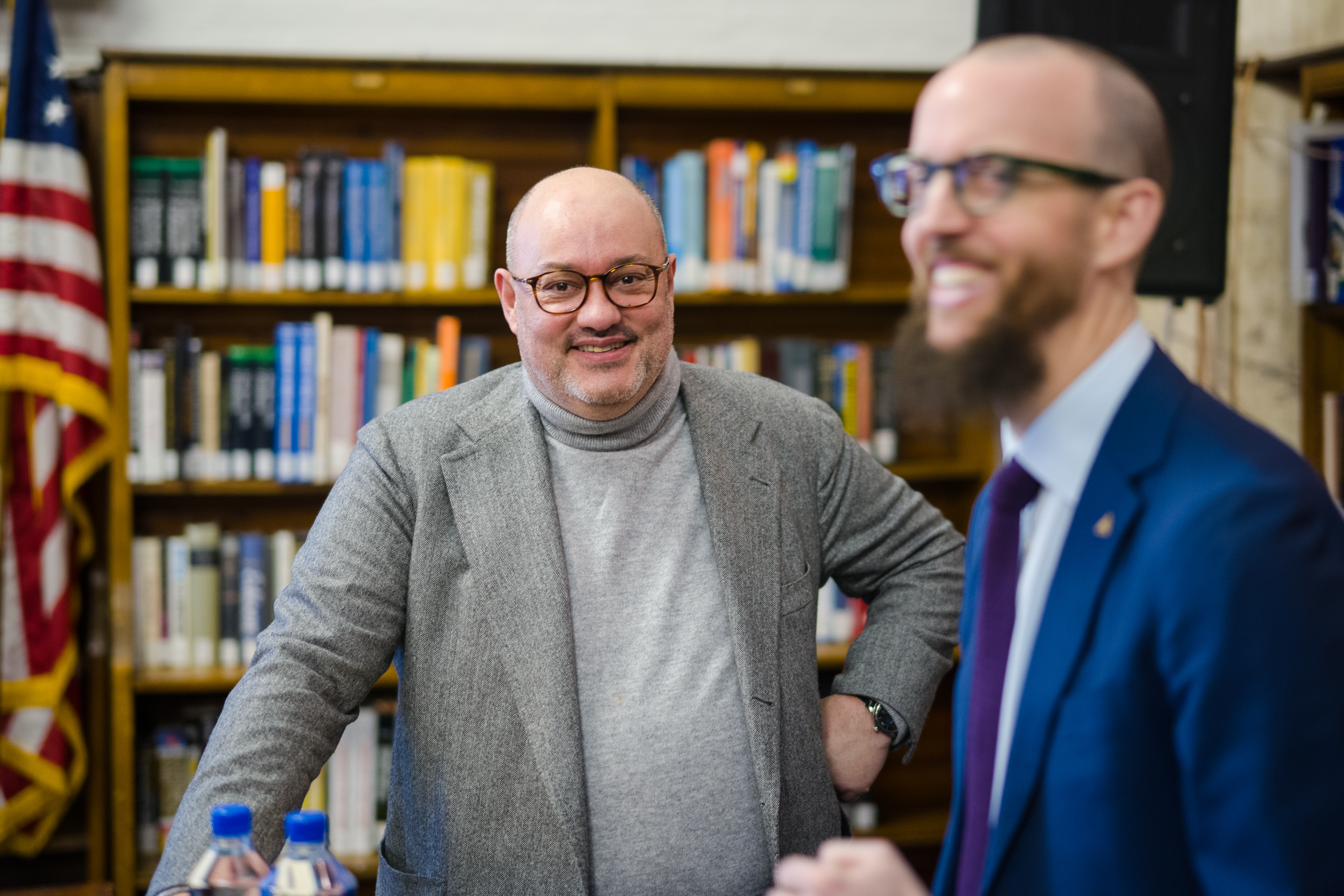
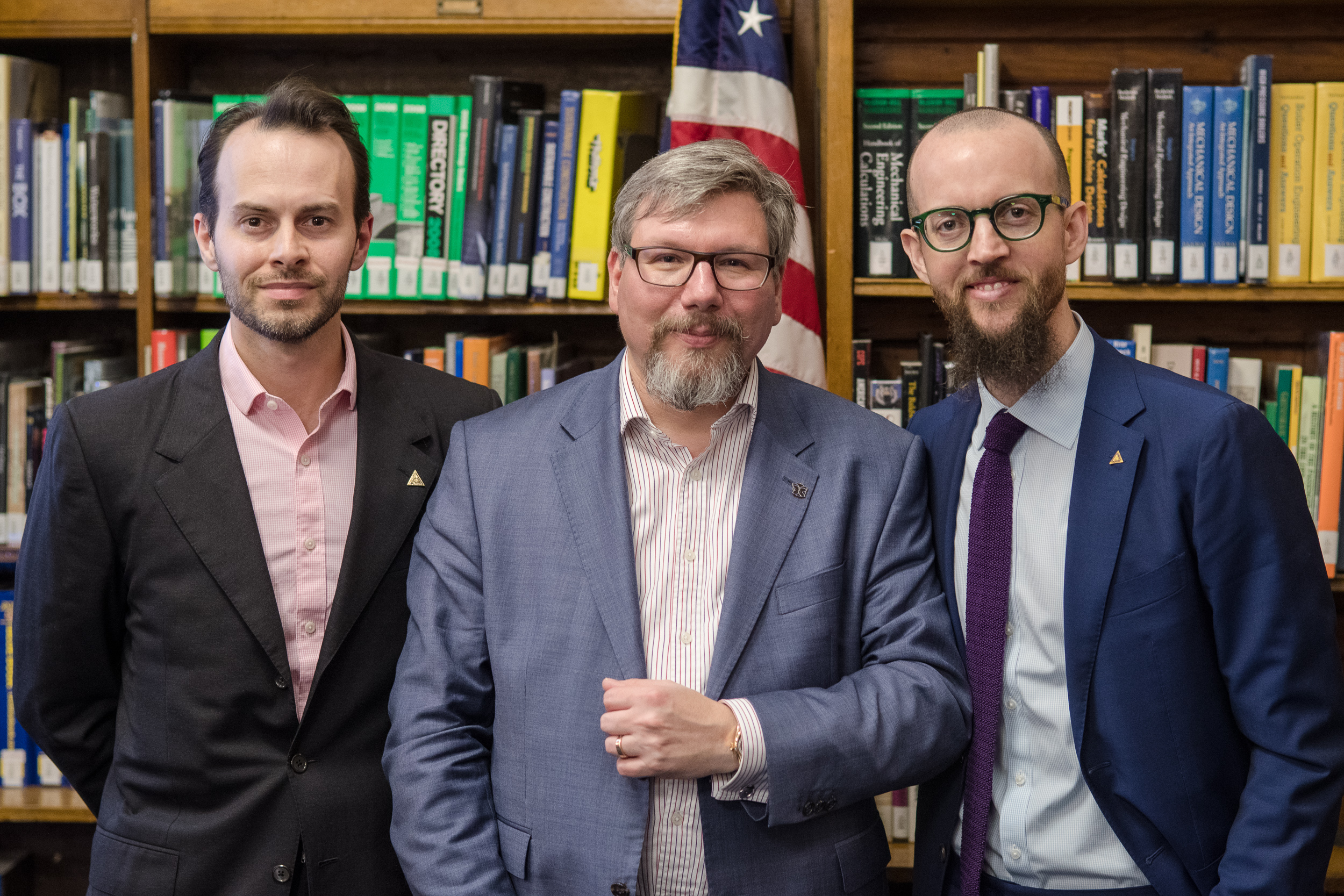
Photography by Atom Moore
Submitted by Melody Benloss, HSNY Librarian
In The News: HSNY Director of Development Ryan Jewell Breaks Down Swiss vs. Japanese Movements
Ever wonder what magical objects are inside a watch to make it tell time? What about the difference between movements assembled in different parts of the world? In this installment of WIRED’s [De]constructed series, HSNY Director of Development and Instructor Ryan Jewell performs a detailed disassembly of two Carpenter watches - making for a great horology lesson and one to satiate our curiosities!
Meet The Board: Brett Walsdorf, Trustee & Director of Special Events
Our Meet The Board series continues with none other than Brett Walsdorf, Trustee and Director of Special Events. Walsdorf is currently working behind the scenes to plan the HSNY 2019 Gala and you can spot him mingling with members before monthly lectures.
Make sure you're subscribed to our newsletter for upcoming Gala announcements!
(L-R) Brett Walsdorf, John Reardon, Ravi Telidevara, Michael Groffenberger, Nicholas Manousos, Michael Fossner.
HODINKEE Celebrates 10 Years
H10 celebrates a decade on December 7-9, 2018
HODINKEE Magazine, Volume 3 is out now!
If you're a fan of timepieces we bet you've heard of HODINKEE, and if you're like us, chances are you visit their website daily.
It's hard to believe but the unstoppable website founded by Benjamin Clymer is celebrating its 10th year as the preeminent resource for modern and vintage wristwatch enthusiasts.
The weekend fête will feature an action-packed schedule with panel discussions, debates, cocktail parties, a conversation with the HODINKEE editors who bring us engaging content daily and much more.
Congratulations to HODINKEE and here's to another 10!
For more information and to join the waitlist visit https://www.hodinkee.com/events/h10/.
Upcoming Lecture: Tradition and Innovation - a Contradiction?
Join HSNY on Monday, December 3, 2018 for a lecture on Tradition and Innovation - a Contradiction?, by Andreas Strehler, Owner of UhrTeil AG.
Tradition means doing things the way they have always been done. It also has the connotation of dismissing all things new. Innovation, by contrast, stands for doing things differently from how they have been done in the past, i.e. for breaking with tradition. In his December 3, 2018, lecture at the Horological Society of New York, Andreas Strehler will argue that in watchmaking, true innovation is no contradiction to tradition but only possible based on tradition.
READ THE FULL STORY HERE!
In The News: From Despair to Repair - HSNY VP John Teifert Takes Us on a Sidewalk Stroll to Barthman Clock
Many will warn you to watch your step as you navigate the streets of New York City. If you look down you just might find the Barthman Clock, a sidewalk clock installed in 1899 which recently received a face (or shall we say, case) lift.
Watch as HSNY Vice President John Teifert guides us down memory lane - Maiden Lane, that is - to one of the most iconic clocks in Manhattan.
HSNY Partners with the Children’s Museum of Manhattan and Bulova for an Interactive Installation About Time
The Horological Society of New York (HSNY) aims to advance horological education for all - including children of all ages.
Beginning Sunday, November 4, 2018, the Children’s Museum of Manhattan (CMOM) debuted “It’s About Time”, a timely new installation that explores the art and science of horology. The installation, created in partnership with America’s first watchmaking guild and American watch brand Bulova, is a curated interactive exhibit on time that aims to unravel the mysteries of horology.
“Time is an abstract concept, especially for young audiences who have a limited awareness of past, present and future,” said Andrew Ackerman, Laurie M. Tisch Executive Director, Children’s Museum of Manhattan. “This installation helps introduce the basic idea of time and the ways we measure it.”
“In our digital age, many children have trouble reading traditional clock faces,” added Ackerman. “In “It’s About Time” children will be able to manipulate the hands of a clock face and gears, while learning about seconds, minutes and hours.”
“It is a pleasure to partner with the Children’s Museum in introducing the art and science of horology to their visitors,” said Edwin Hydeman, Executive Director, Horological Society of New York. “For 152 years, the Horological Society of New York has helped pave the way for watchmakers and enthusiast. This display hopes to explain the mysteries of horology and makes them accessible and enjoyable for visitors of all ages and allows us to keep our century-old traditions alive.”
“We are excited to work with the Children’s Museum on the “It’s About Time” installation,” said Michele Lupton, Vice President of Marketing, Bulova. “Since 1875, Bulova has been sharing our innovations in timekeeping with the world. It is a pleasure to work with the museum to help children explore and understand time and the way clocks and watches work.”
The installation features the following components:
Time in a Day — An interactive magnetic sign that helps children understand the number of hours in a day, as well as the cycle of daytime and nighttime. Using magnets or their fingers, families can mark significant activities with their associated times throughout the day
Counting Time — Children can practice telling time by manipulating three clocks with moving hands
It’s Your Time — This large graphic allows children to “be” the clock, inserting their face in a cut-out and using their arms as the “hands” of this oversized clock
Watches & Clocks — Check out a watch disassembled into pieces to reveal its inner workings, along with its design drawings
Moveable Gears — Children can turn a dial and experiment with how gears work together and move at different speeds
Horology Tools — A display showcasing a collection of tools that are specific to a horologist
Horology Videos — Watch a renowned horologist at work and the inner workings of watches
“It’s About Time” is displayed on the Museum’s fourth floor stairway landing through summer 2019. For more information, please visit www.cmom.org.
Photo credit: Emily Munro for the Children’s Museum of Manhattan
Meeting Recap: The Evolution of the Chain-and-Fusee Mechanism in the Quest for Constant Force
Video recordings of lectures are available to members immediately (using your membership password), and the general public with a 2 month delay.
Romain Gauthier, Founder & CEO of Manufacture Romain Gauthier SA
October 29, 2018
In the history of horology, one of the holy grails to attain is constant force (or constant torque). As the November speaker at The Horological Society of New York lecture series on October 29, 2018, Romain Gauthier, Founder & CEO of Manufacture Romain Gauthier SA, described the progression of the chain-and-fusee mechanism and how he came to engineer his own chain-and-fusee for his award winning Logical One timepiece.
The Puzzle of Constant Torque
With a lecture titled The Evolution of the Chain-and-Fusee Movement in the Quest for Constant Force, Gauthier gave a historical overview of torque that is delivered by the mainspring and how other mechanisms progressed throughout the years, such as the verge Escapement, stackfreed, stopwork and remontoire. The dawn of the chain-and-fusee was illustrated by a sketch of Leonardo Da Vinci’s fusee gears, a photograph of an astronomical table clock by Jacob Zech that was made around 1525 and a sketch of Thomas Minchin Goodeve’s cord and fuse circa 1897. The marine chronometer was one of the common places where the chain-and-fusee was used; in which Gauthier segued to the Revival period by referencing A. Lange & Söhne’s Pour le Mérite Tourbillon.
“It’s impossible to compensate the infinite” - Romain Gauthier
After Gauthier made his first caliber, the Prestige HM, he came across the challenge of how to make the chain-and-fusee mechanism more effective. For the most part, he had to re-design the chain and re-design the fusee to the patented snail cam in order to produce the Logical One timepiece. Unique aspects of Gauthier's chain-and-fusee include the use of jewels in between links and the shorter chain not needing a tall fusee.
During the Q&A session there were a handful of questions but Gauthier gave well-explained, generously-filled answers. Although Philippe Dufour considers Gauthier a watchmaker, Gauthier considers himself more as an engineer extending his creativity and expertise to horology. Gauthier’s lecture was a welcome perspective for the watchmakers and the technically-inclined watch enthusiasts in the audience.
HSNY thanks Romain Gauthier for his fascinating lecture!

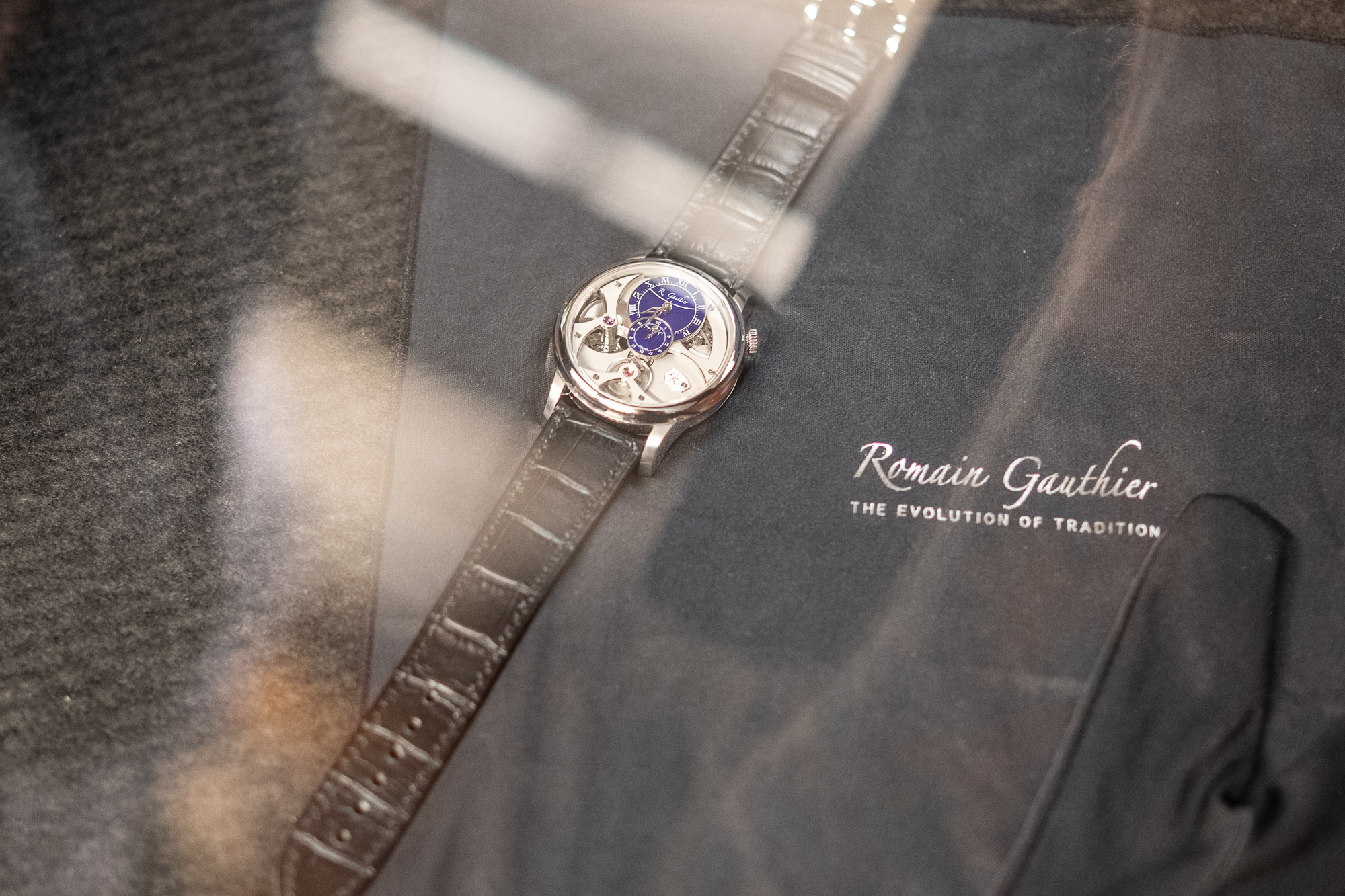
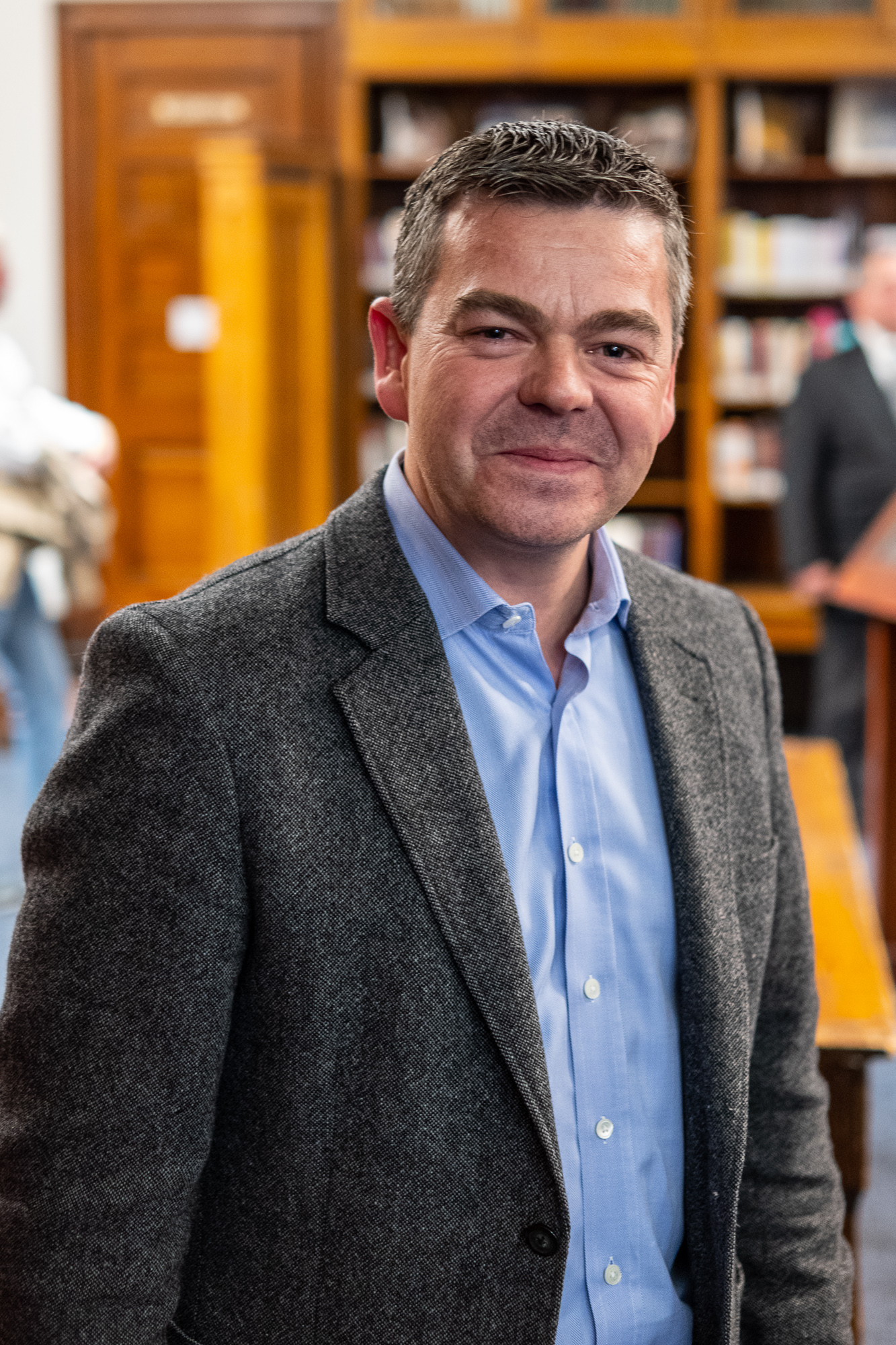
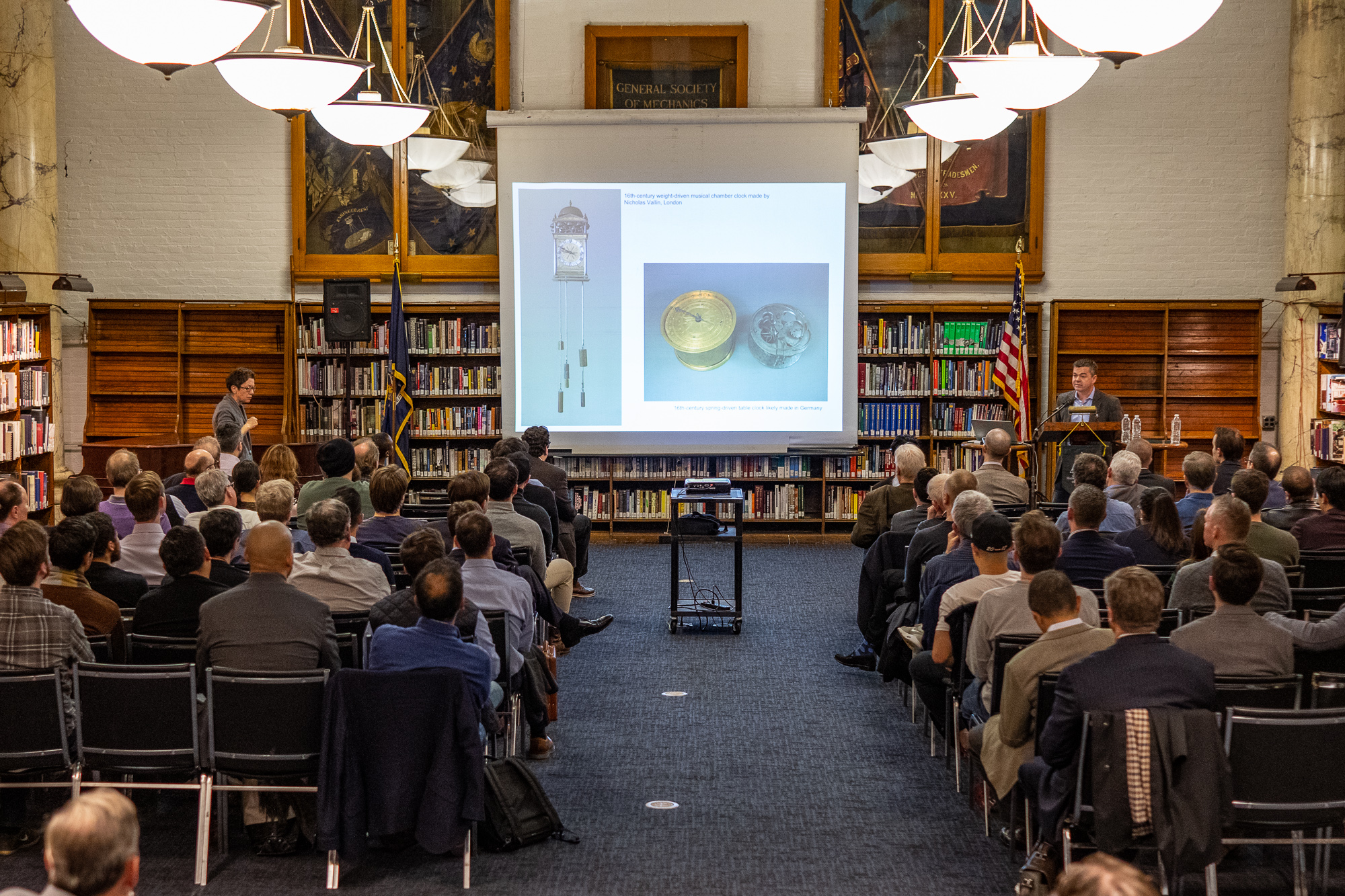
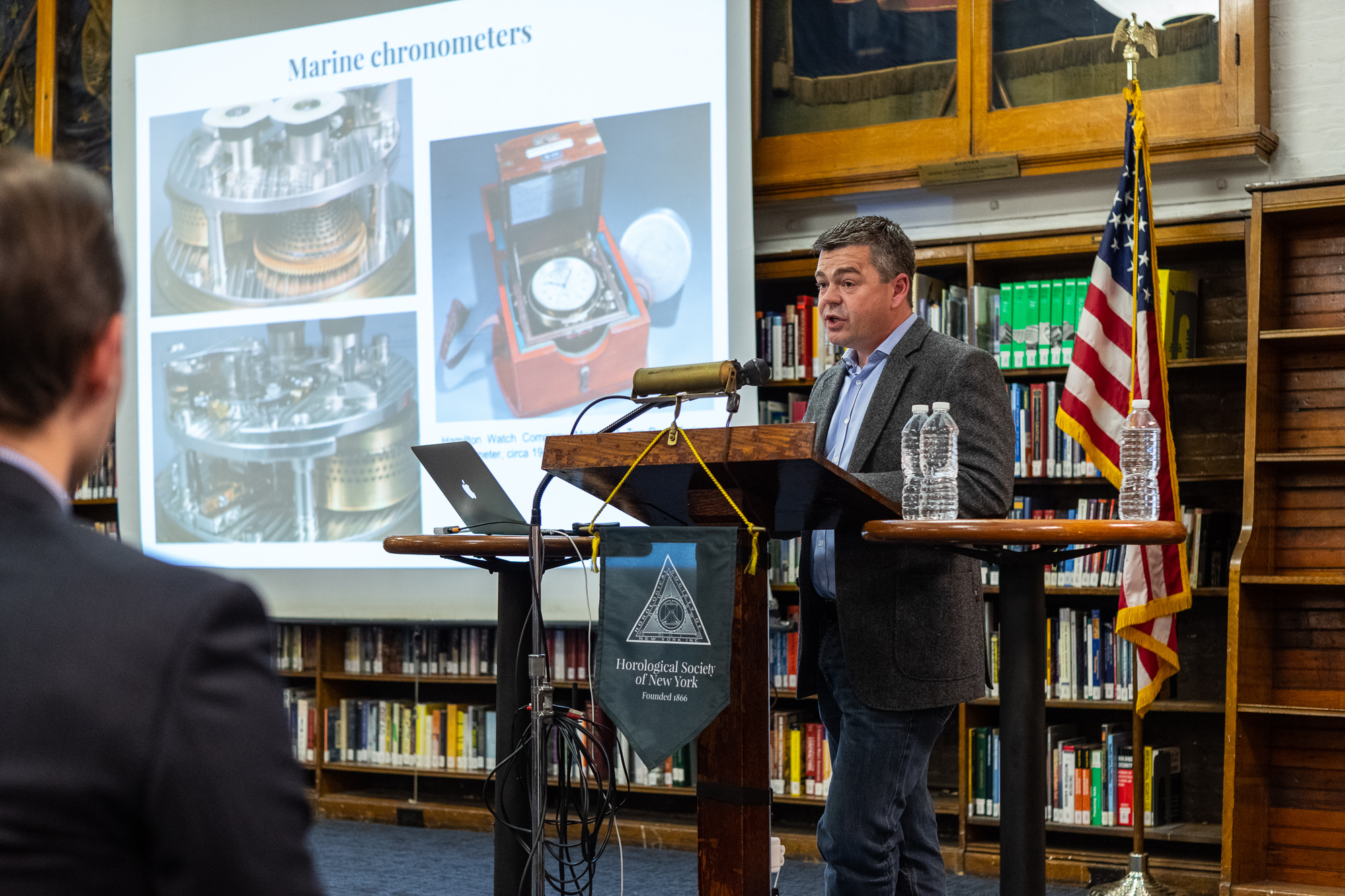
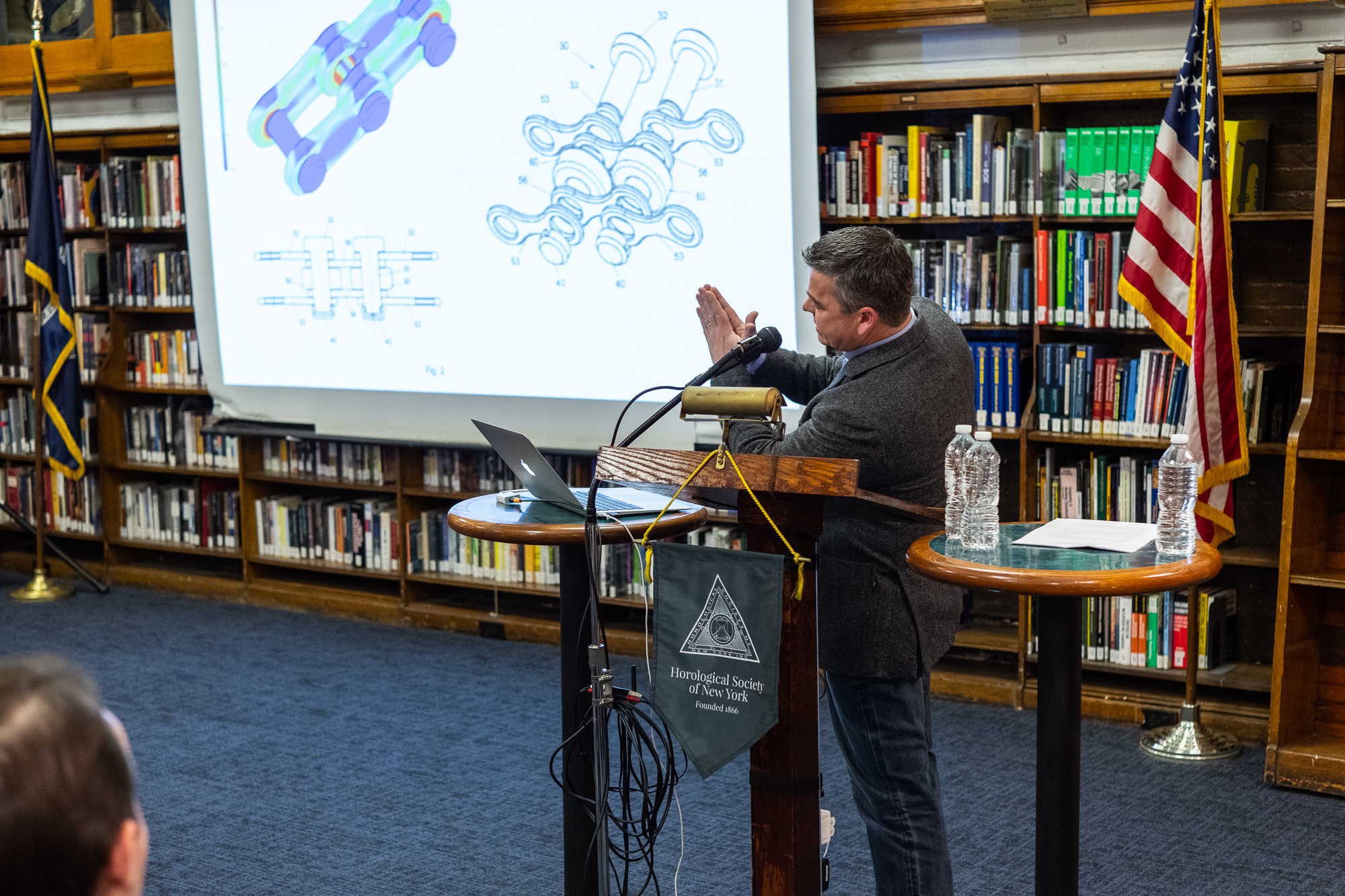
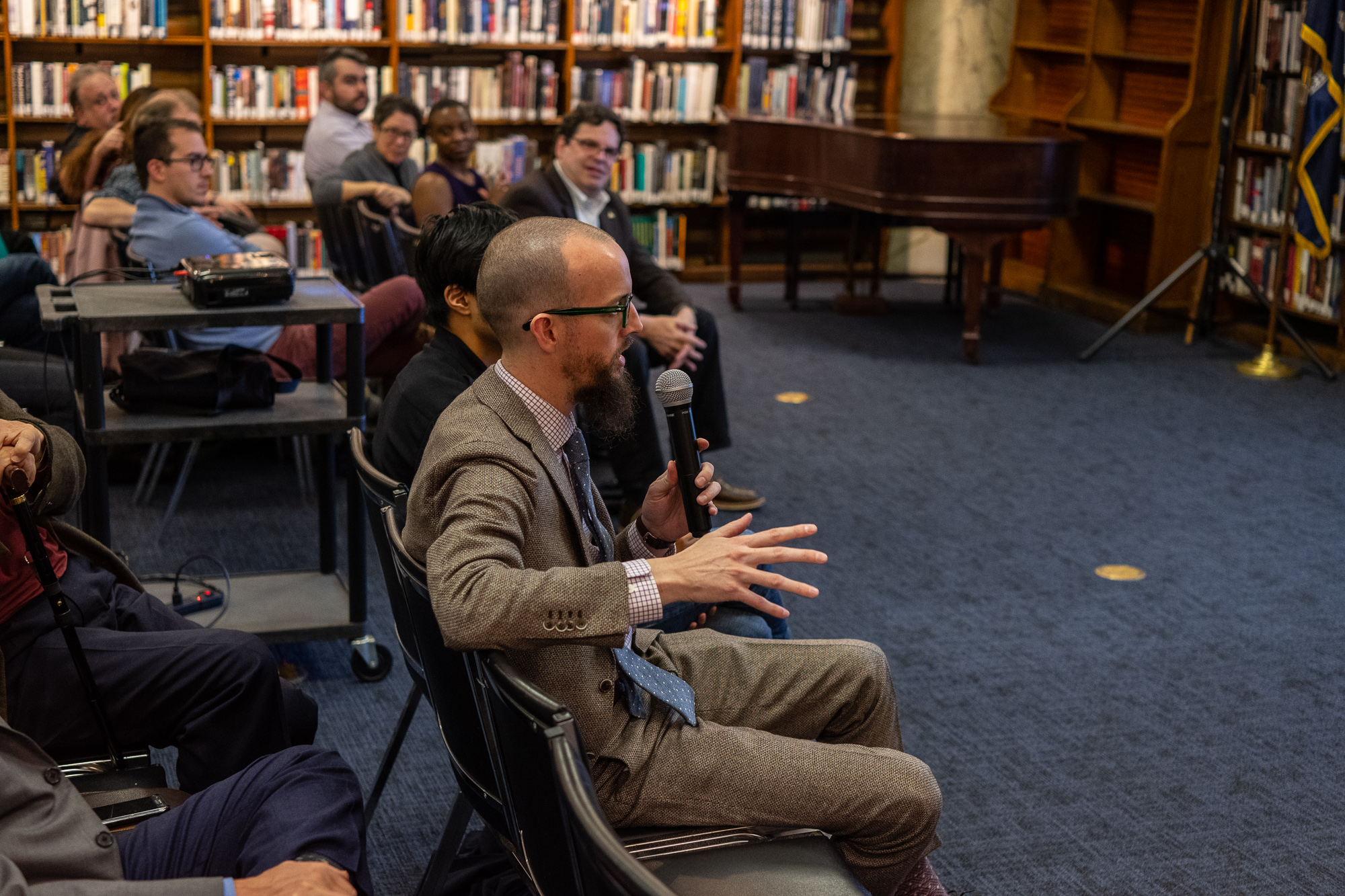
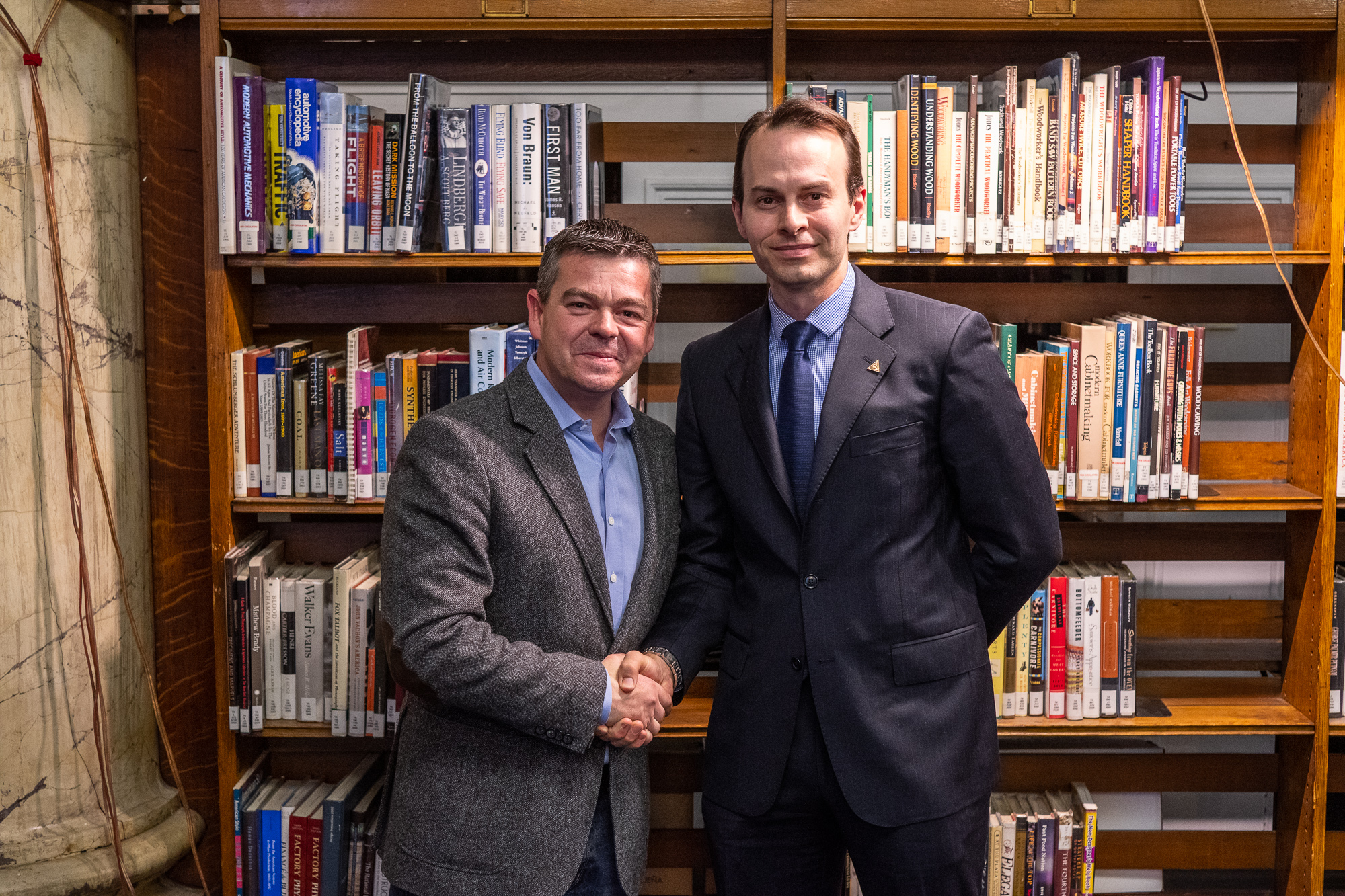
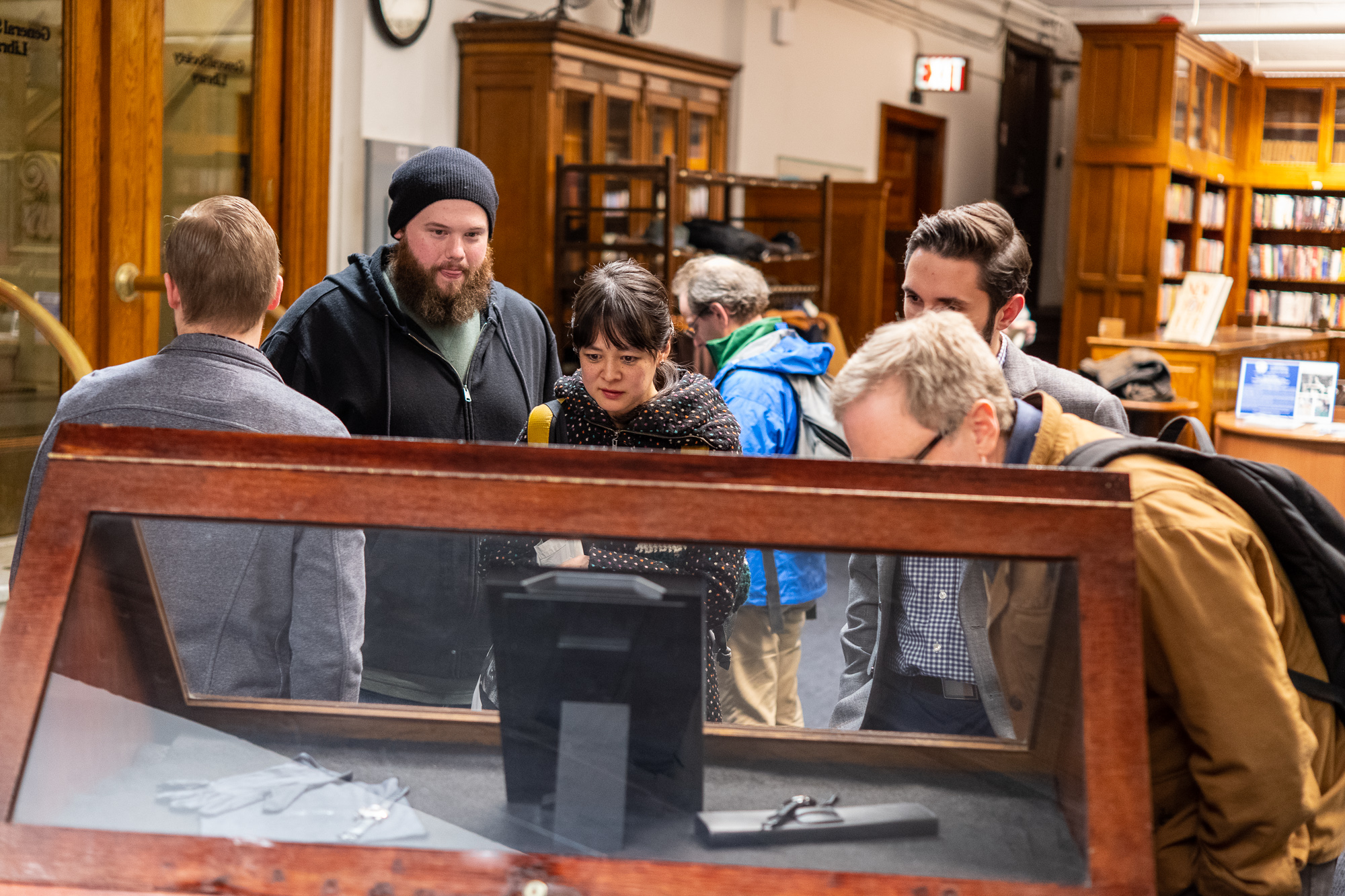
Photography by Atom Moore
Submitted by Melody Benloss, HSNY Librarian
On the Horological Horizon: Filmmaker Michael Culyba’s Kickstarter Campaign for “Keeper of Time” Documentary
New York-based independent production company Tourbillon Film Works, LLC is continuing to raise money to fund filming for “Keeper of Time”, a feature length documentary produced and directed by Michael Culyba, that explores the history of horology, mechanical watchmaking and the very concept of time.
There are just 13 days left to pitch in and become part of (horological!) cinematic history. The ambitious project, which includes interviews from top experts and the finest watchmakers in the world, is an all-or-nothing project and has a Kickstarter goal of $100,000.
“Keeper of Time” delves into the world of timekeeping by examining the planets and stars above, the astonishing engineering of mechanical watches, the sophisticated atomic clocks that keep our modern world running and much, much more. All the while, the film contemplates the theoretical and physiological notions of time, aging and human mortality.
Featuring a who’s who from cutting-edge scholars in the fields of molecular biology, quantum physics and philosophy, the film includes interviews with master watchmakers and industry leaders worldwide.
More about the Kickstarter campaign
The Kickstarter campaign features an array of exclusive rewards. Working with New York graphic designers Small Stuff, the campaign is offering a limited edition film poster featuring a diagram by world renowned watchmaker Roger W. Smith, a set of three working wall clocks handmade in Germany, and an originally designed paper sundial to be printed at home and folded to tell time in the northern hemisphere. The Kickstarter is also offering rewards from the famed watchmakers featured in the film! Click here for a full list of pledge rewards.
In Remembrance of Joseph L. Cerullo, CMW, CMC
It is with heavy hearts that we report the passing of Joseph L. Cerullo, a friend of HSNY.
Joseph, 61, passed away on Monday, October 8, 2018 and a gathering of family and friends was held on Monday, October 15. He was a great leader in the industry, serving twice as President of AWCI and as recipient of the AWCI Fellow Award in September 2018.
We thank Joe for his unwavering dedication. He will be greatly missed.
In lieu of flowers, the family has asked that donations be made in honor of Joseph Cerullo to the 4th Dimensions Clubhouse, 4425 Hollywood Boulevard, Hollywood, FL 33021.
Meeting Recap: Fifty Fathoms: The Conception and Evolution of the Modern Diving Watch
Video recordings of lecture are available to members immediately (using your membership password), and the general public with a 2 month delay.
Jeffrey Kingston, Author & Lecturer for Blancpain Watches
October 1, 2018
Ask anyone today if they sport a diving watch because they’re avid fans of the underwater activity. Chances are far slimmer than those who simply like the look of the timepiece, but that wasn’t the case when diving watches first came on the scene in the 1950s.
The Horological Society of New York’s lecture series on October 1, 2018, was presented by Jeffrey Kingston, Author & Lecturer for Blancpain Watches, and focused on the conception and evolution of the modern diving watch.
Kingston commenced his lecture with the mere observation that diving as we know it today bears little resemblance to what it was in the 50s. What began as a military tactic after World War II and an extreme, dangerous sport for a niche audience is now associated with family vacations to the Caribbean.
In enters Blancpain, a Swiss watchmaking brand with Jean-Jacques Fiechter at the helm. A man belonging to the niche world of sport diving, Fiechter faced a dangerous roadblock when he lost track of time underwater and almost ran out of air. To combat future scares, Fiechter began to dream up a watch that would be able to tell time and record the beginning of dives to keep track of oxygen supply levels.
Because diving watches had not been invented prior, Fiechter had to work his way backwards, thinking of every question he would encounter, followed by answers to the problems. For example, there were no sealed chronometers at the time and watches of the era were small and not waterproof, let alone able to withstand meters underwater.
With time (no pun intended) Fiechter created the first diving watch and named it Fifty Fathoms as an ode to Shakespeare’s “The Tempest”.
It wasn’t long before news spread and militaries began inquiring about the Fifty Fathoms and adopting the innovation as a tool used during combat. The French were the first to commission Blancpain, followed by the Germans and eventually the United States Navy.
Blancpain’s Fifty Fathoms is a classic example of how the art, science and technology of horology aided in expanding the exploration of new frontiers. With equal parts curiosity and innovation, Fiechter was able to transition his vision from legend to reality and change horological history as we know it.
HSNY thanks Jeffrey Kingston for his fascinating lecture!
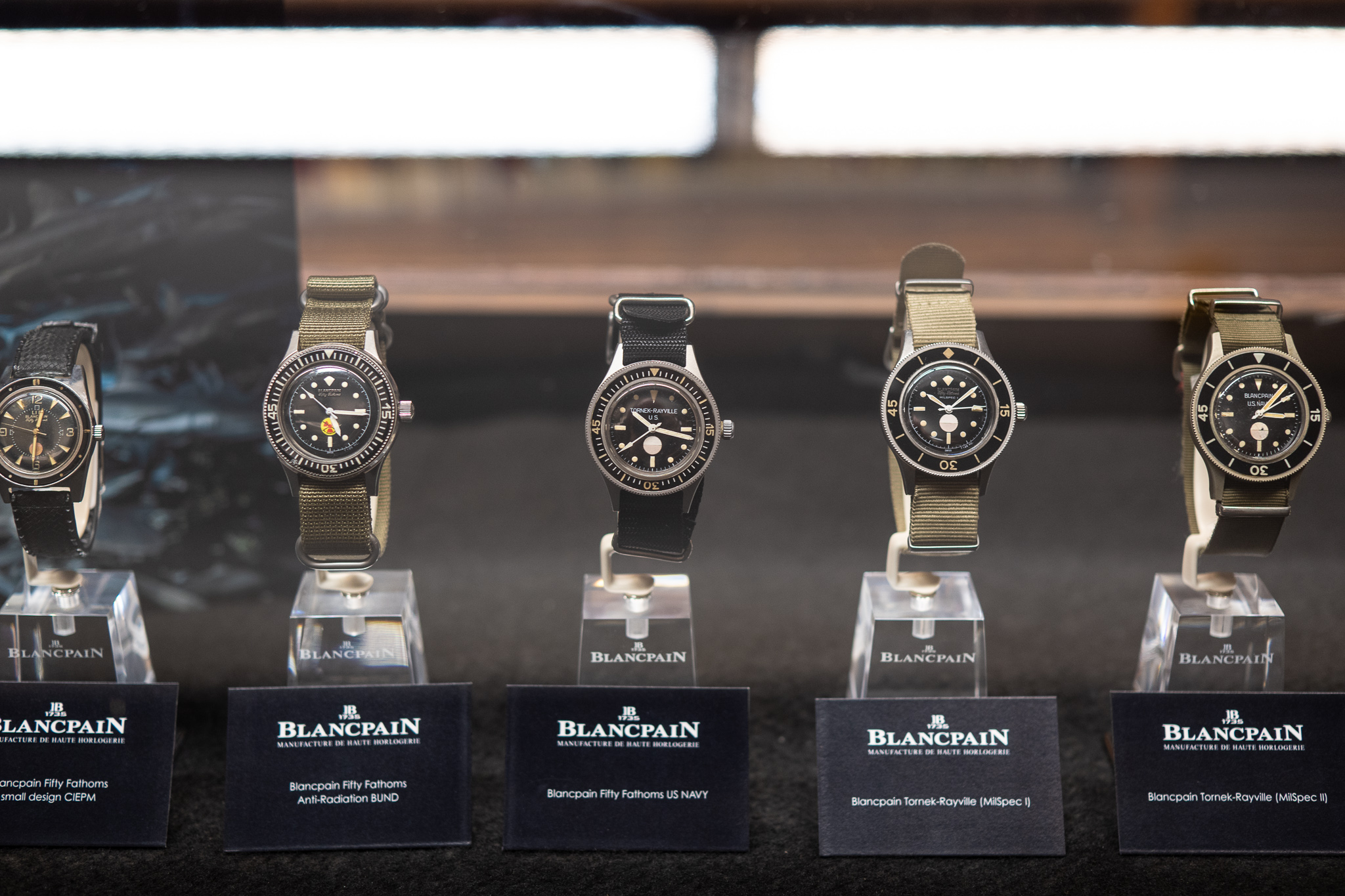
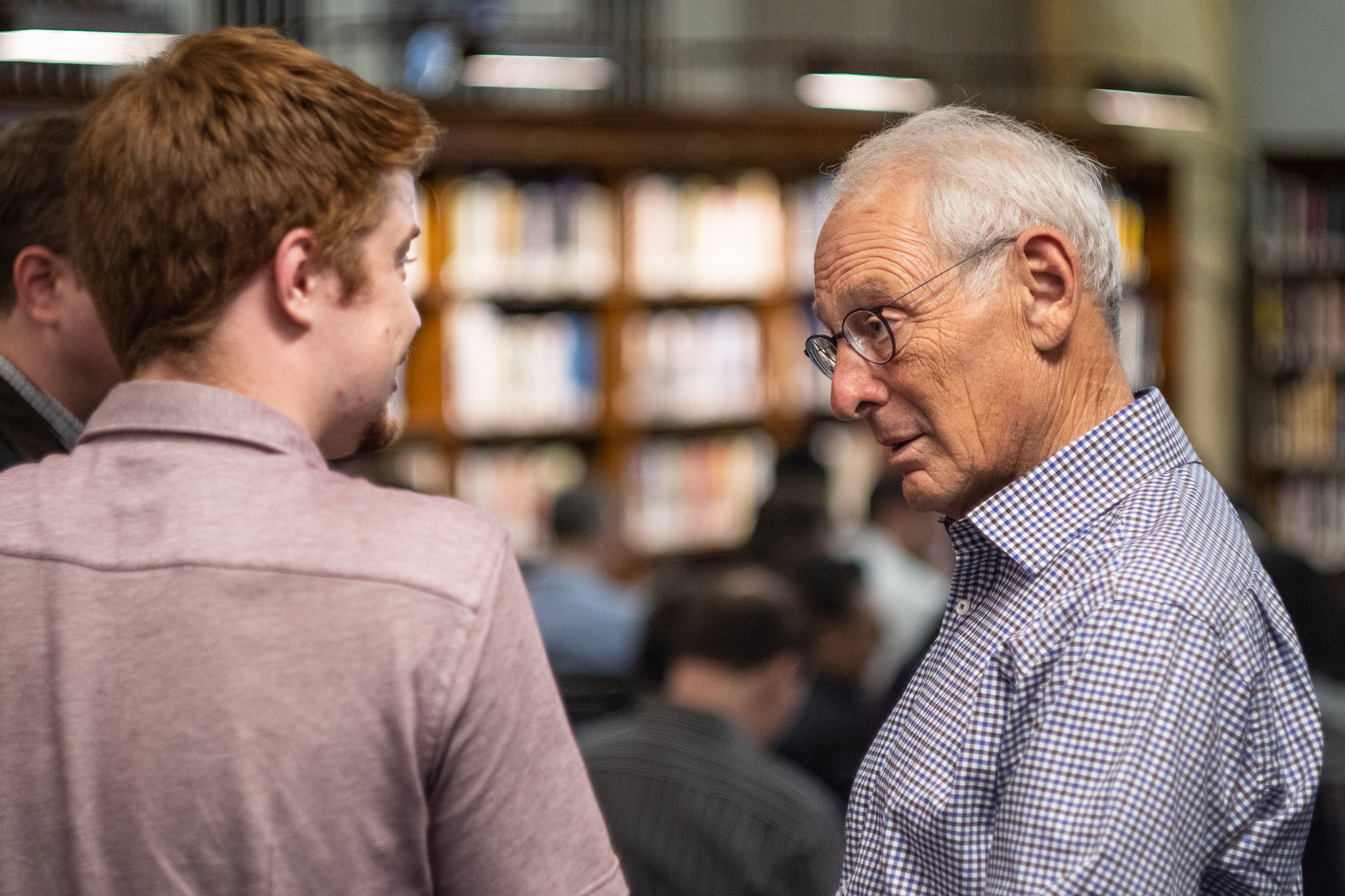
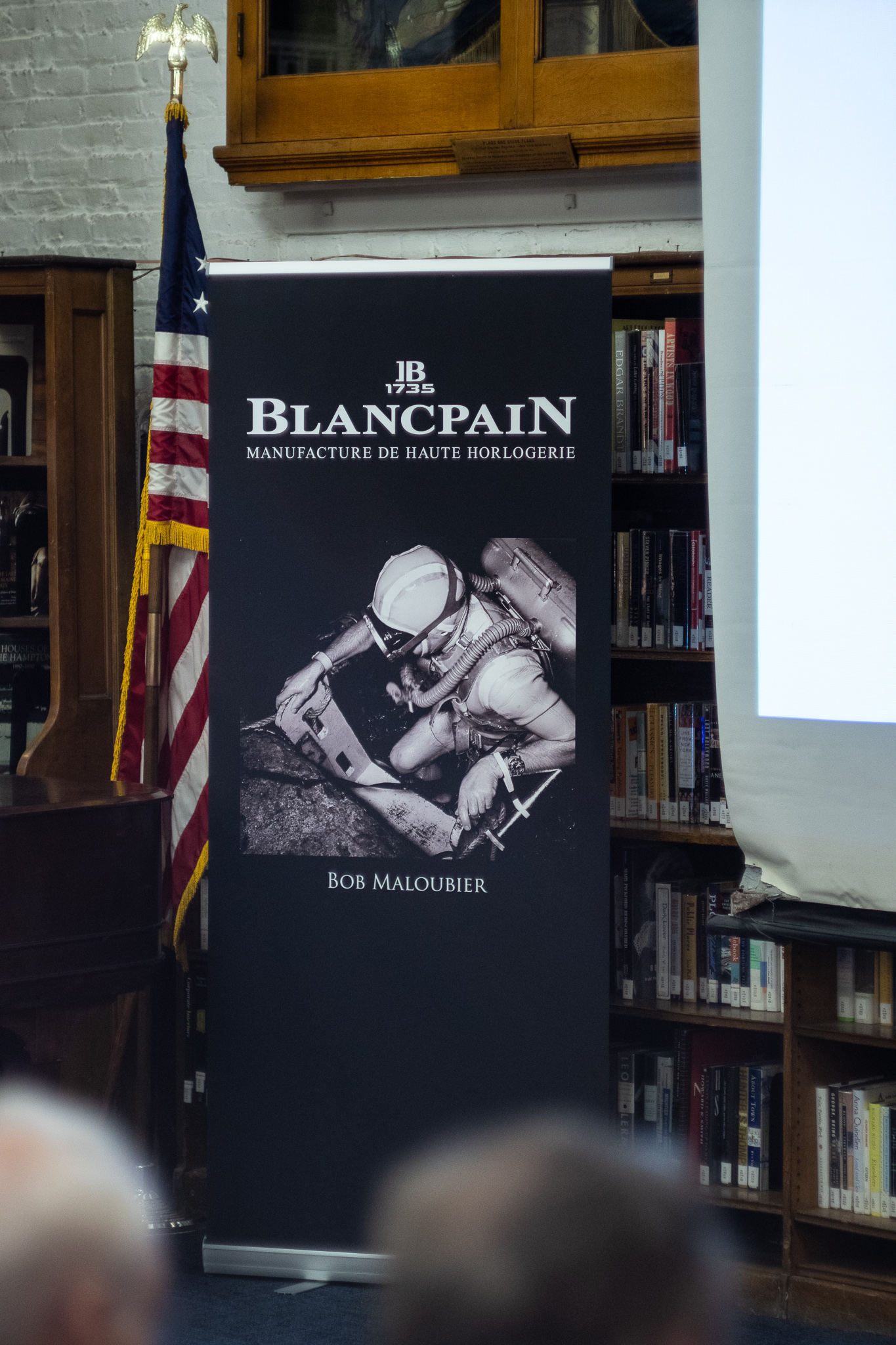
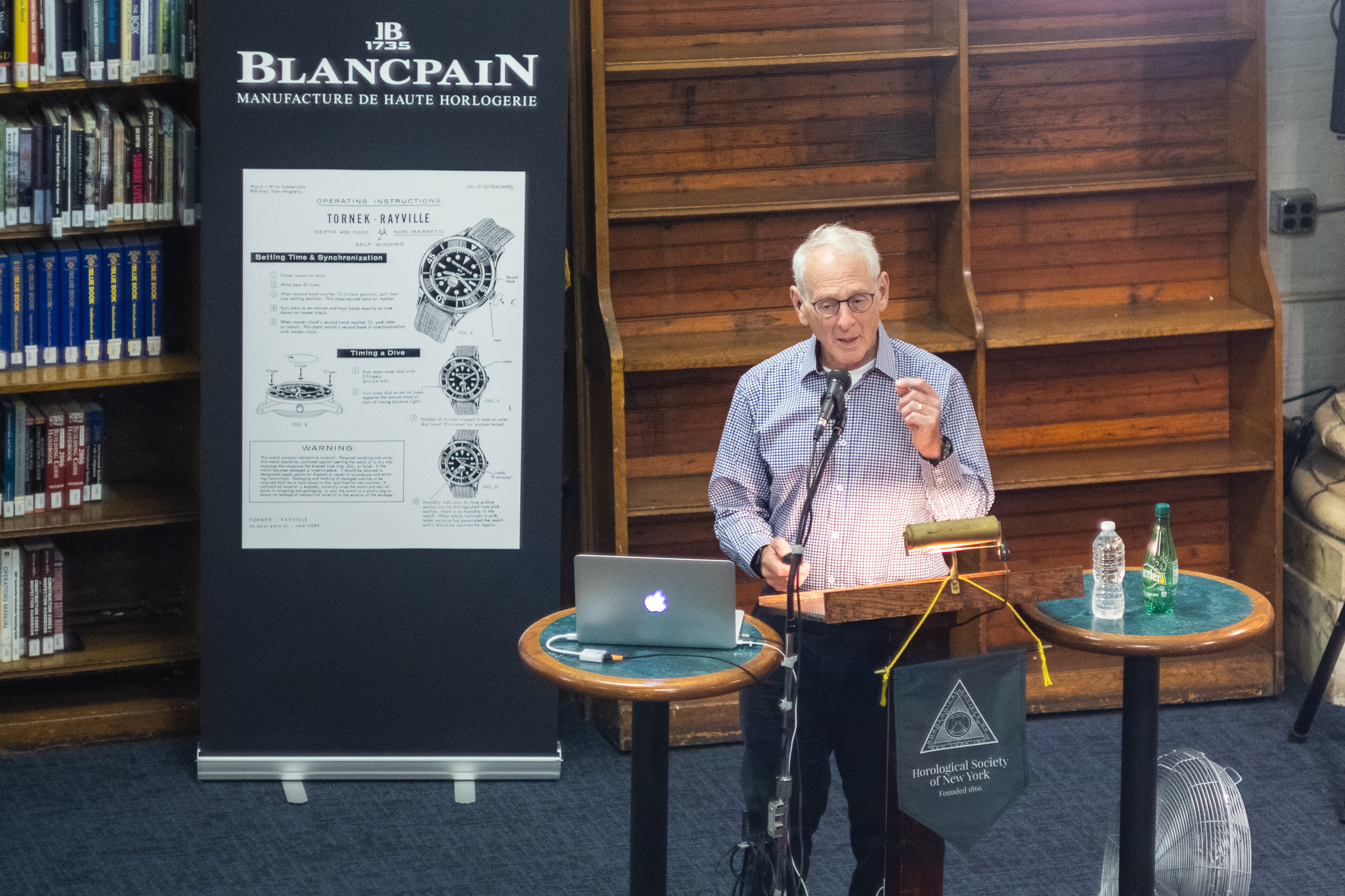
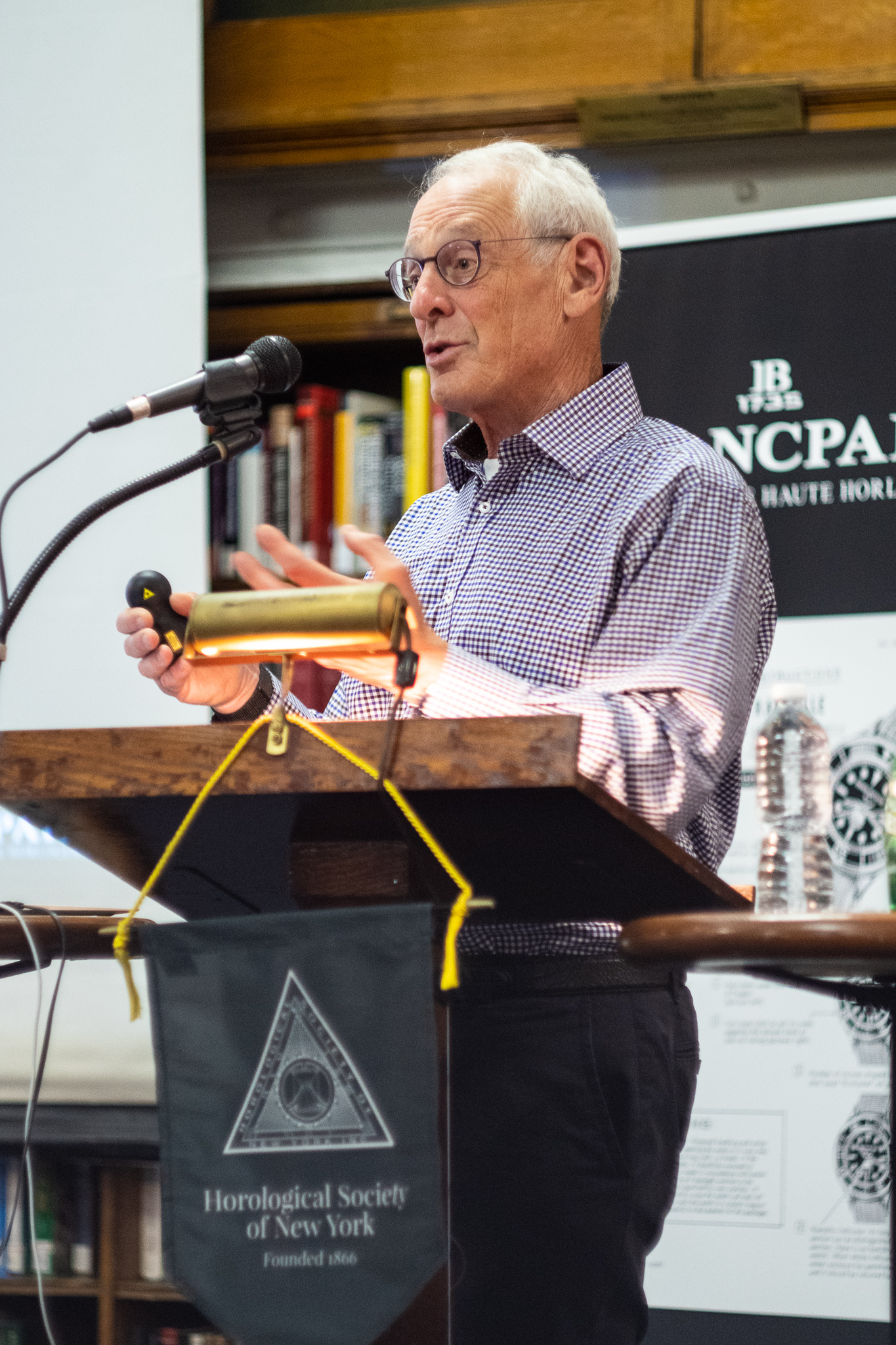
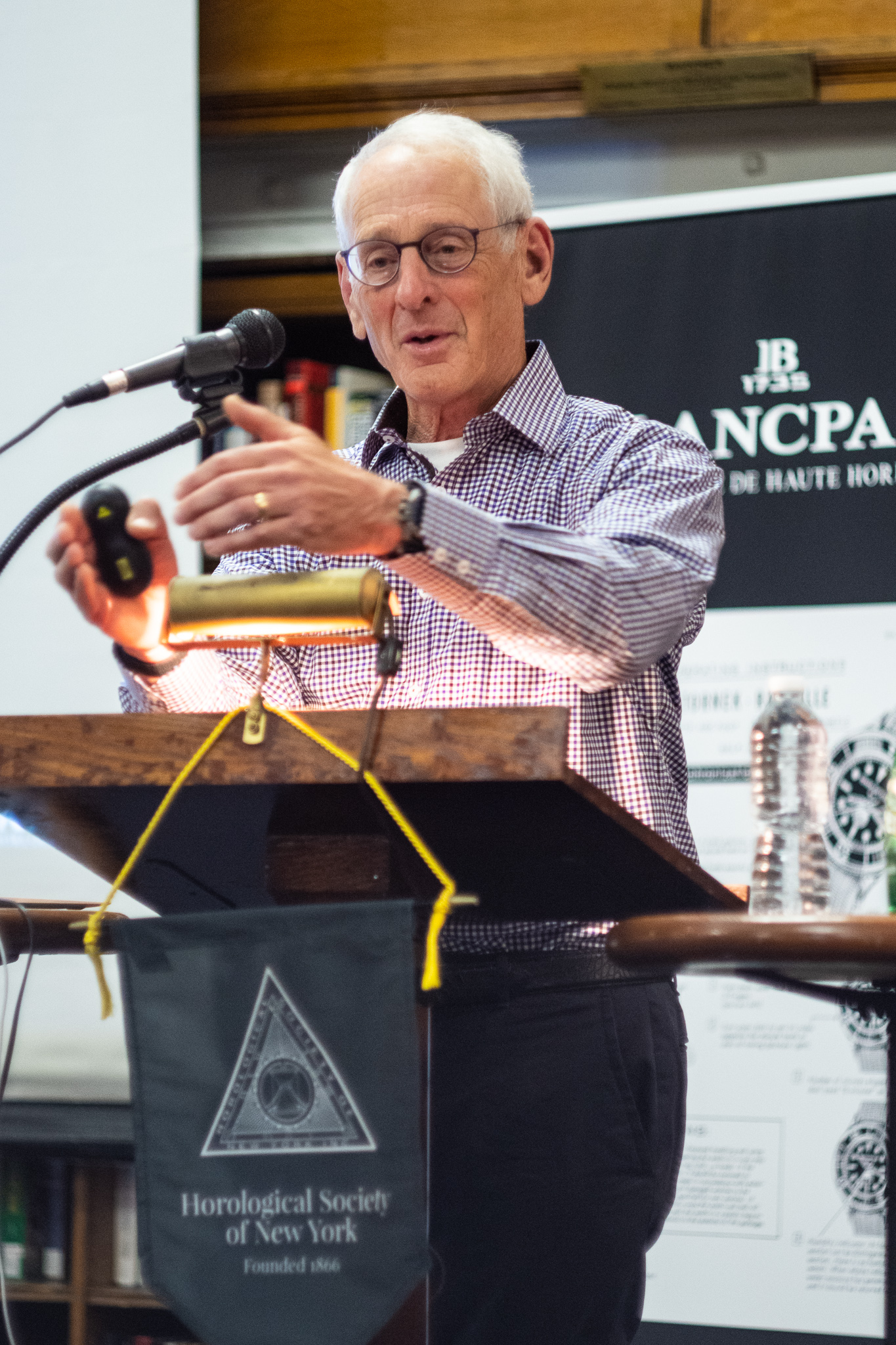
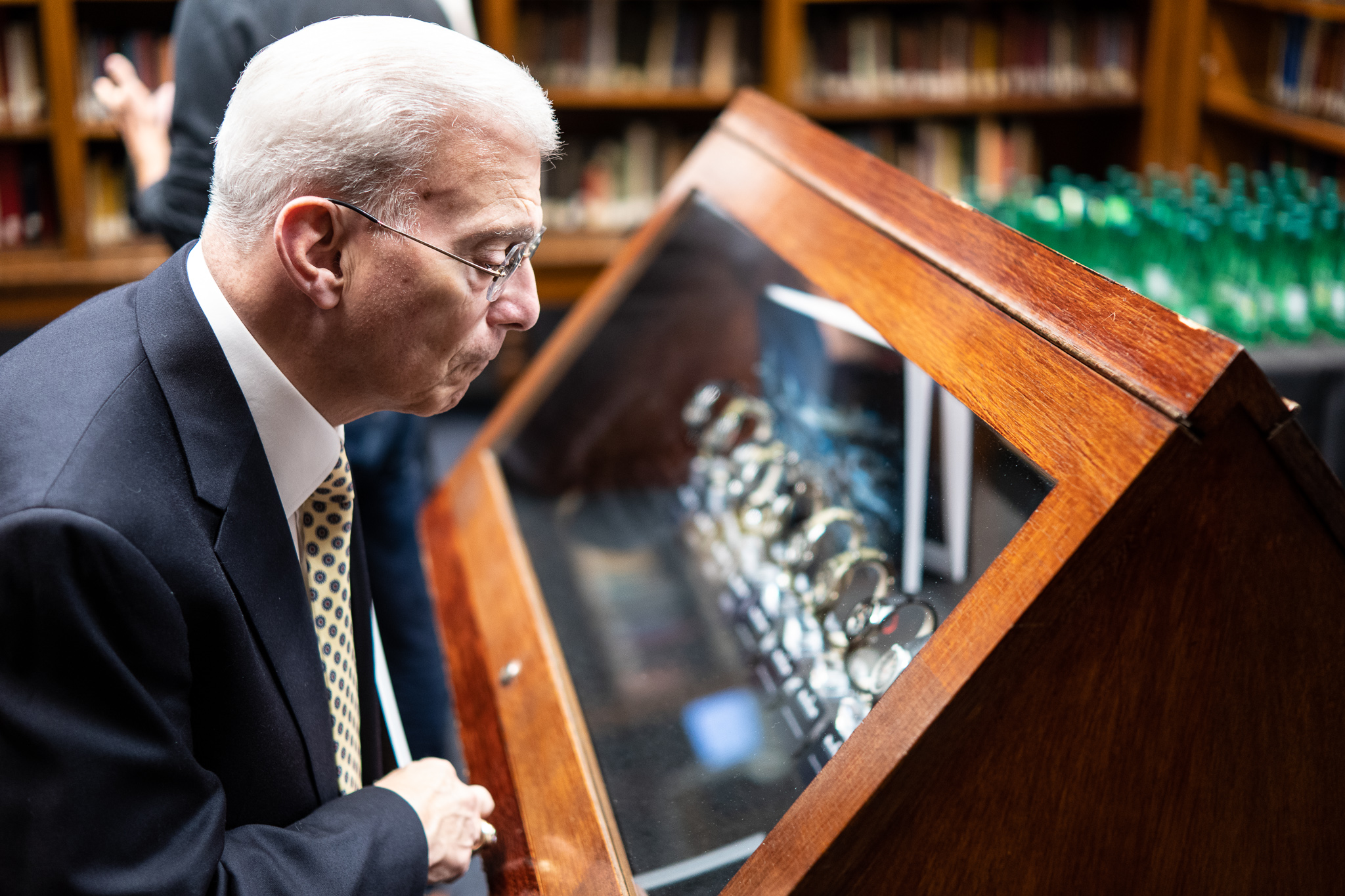
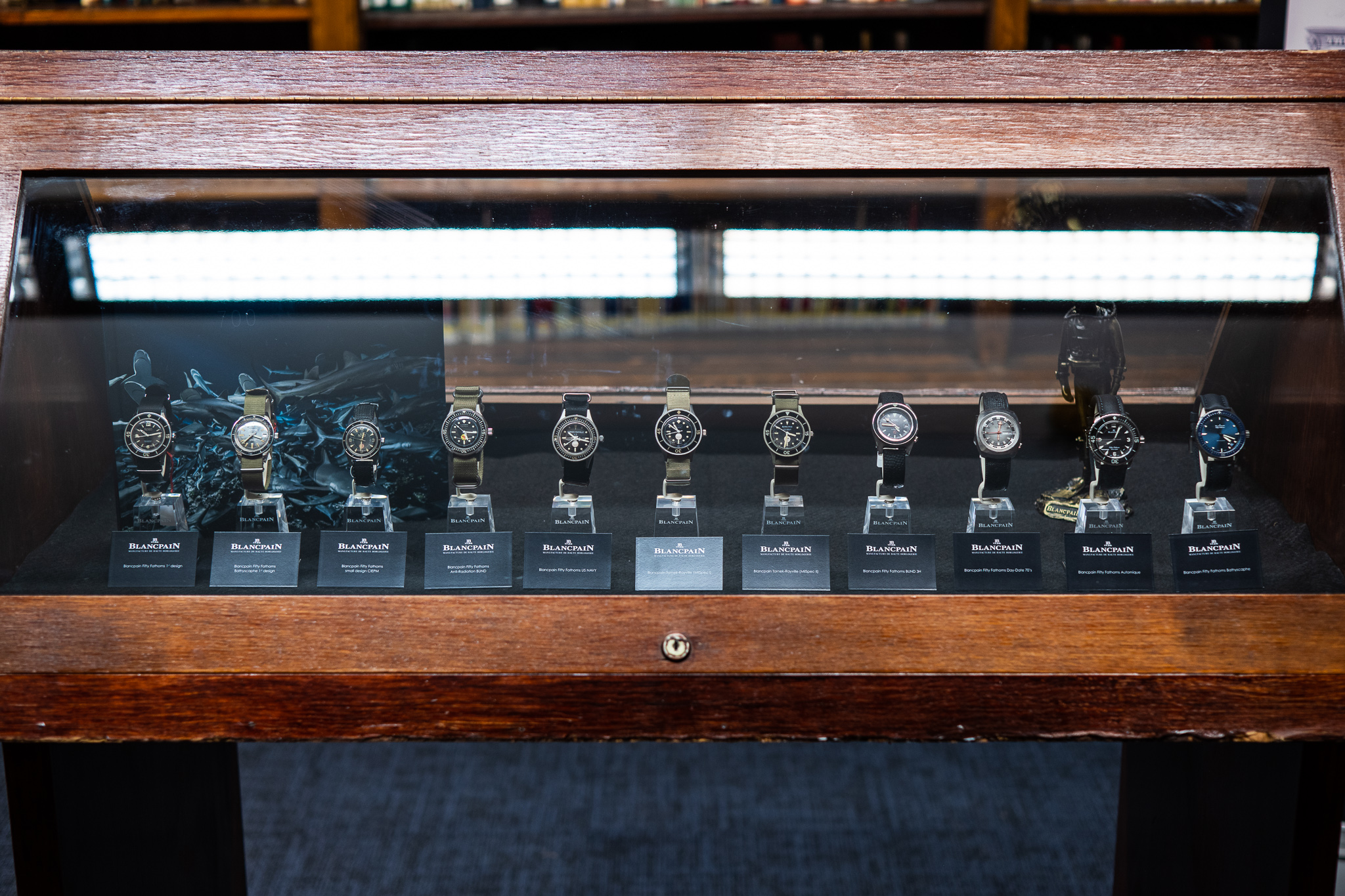
Photography by Atom Moore
Member Highlight: Ashton Tracy Launches Horological Insider Blog
Ashton Tracy
Meet Ashton Tracy, a Canadian-based watchmaker and one of the masterminds behind HSNY’s education program. Tracy recently launched a blog titled Horological Insider with content focused on watchmaking education and topics he has encountered over the years in the watch restoration business.
Tracy earned the WOSTEP diploma at the British School of Watchmaking and is now regarded as an expert among collectors and dealers. (For example, his workshop in Melbourne was the official Mont Blanc service center for Australia!)
HSNY is proud to share content from Horological Insider and continue advancing the art of science of horology with a talented team of professionals.
Check out Tracy’s blog for previous posts and stay tuned for more!
HSNY's Traveling Education to visit Denver this weekend, Oct. 20-21
Click here to purchase tickets!
Upcoming Lecture: The Evolution of the Chain-and-Fusee Mechanism in the Quest for Constant Force
Join HSNY on Monday, October 29, 2018 for a lecture on The Evolution of the Chain-and-Fusee Mechanism in the Quest for Constant Force, by Romain Gauthier, Founder & CEO of Manufacture Romain Gauthier SA.
Romain Gauthier
When the first spring-driven clocks were invented in the 15th century, they brought with them a conundrum that would become one of horology’s holy grails – providing constant and consistent energy to the movement.
Today, the vast majority of machines run on constant force: cars and planes, for example, don’t start running more slowly as their fuel runs low. A mechanical timepiece works quite differently. The force, or torque, delivered by its mainspring varies as the mainspring unwinds, resulting in fluctuations in the watch’s timing rate over the course of its power reserve.
Watchmakers, clockmakers and engineers alike have proposed various mechanical solutions throughout history for solving the puzzle of achieving constant force from the mainspring.
This lecture will discuss their merits and drawbacks with a special focus on the chain-and-fusee mechanism that dominated watchmaking in the 17th century and which has seen an intriguing return to use in contemporary haute horlogerie, including Romain Gauthier’s very own Logical One.
READ THE FULL STORY HERE!
Brittany Nicole Cox awarded as finalist in MAD's Burke Prize
If you were around in March you may recall a riveting lecture by Brittany Nicole Cox on horological conservation and automata.
Now, the Seattle-based antiquarian horologist is back in New York City, this time as a finalist in the Museum of Arts and Design’s (MAD) Burke Prize for contemporary craft. Cox, who holds one — if not the only — Masters degree in horological conservation in the US is currently one of 16 finalists chosen for her accomplished work.
On exhibition until March 17, 2019 is Cox’s Cochlea (Snail), a seemingly simple yet intrinsically complex mechanism fashioned as a snail with a rabbit head. The work is composed of brass, steel, sterling silver and cocobolo.
“Cochlea is a marriage of the philosophy of nature and the machine, the cam and the rose engine, and the duality of human nature represented through the pairing of the rabbit and snail,” explains Cox. “It is based on the illustrations found in the margins of illuminated manuscripts and bestiary texts.”
The inaugural Burke Prize — an unrestricted award of $50,000 — will be awarded to one professional artist selected by a jury of professionals in the fields of art, craft and design.
HSNY wishes Britany Nicole Cox much luck and a great exhibition season!
AWCI hosts American Timepiece Austin, October 12 & 13
Our friends at the American Watchmakers-Clockmakers Institute (AWCI) are hosting American Timepiece Austin this weekend!
The Lone Star State is about to be buzzing with timepiece enthusiasts when collectors, brands and vendors unite on Friday, October 12 and Saturday, October 13. Texas provides the perfect meeting place for those not based on the East or West coast and best of all, the event is free and open to the public.
For full details and tickets, please visit http://www.americantimepiece.com/austin.
Upcoming Lecture: Fifty Fathoms: The Conception and Evolution of the Modern Diving Watch
Join HSNY on Monday, October 1, 2018 for a lecture on Fifty Fathoms: The Conception and Evolution of the Modern Diving Watch, by Jeffrey Kingston, Author & Lecturer for Blancpain Watches.
Jeffrey Kingston
Today, many take diving watches for granted. Perhaps this is because few are actually used for diving. Conference room wear is the modern norm.
But in the aftermath of World War II, things were different. The experience of the war set many of the world’s militaries on the path of developing combat diving corps. At the same time there were a miniscule number of amateur diving clubs that came into being giving birth to the notion of sport diving. Both groups had common cause for much of their equipment. Prominent on the list was a timing instrument to keep track of elapsed time underwater.
In sharp contrast with other types of watches that followed designs and conventions developed over two centuries, as the decade of the 1950’s began, there was no precedent to follow for the construction of dive watch. The creation of a dive watch would be a white sheet of paper project.
This lecture will follow the inspired story of Jean-Jacques Fiechter, then CEO of Blancpain and a passionate diver, on his development of the Fifty Fathoms and his innovations that made the watch a reality. The history will include the chapters involving the French, the German, and the US Navy.
Read the full story here!
HSNY To Host Watchmaking Classes In Detroit, September 29 & 30
Already a top manufacturing hub in the country, Detroit will have the unique opportunity to get hands on with the assembly of watches when the Horological Society of New York (HSNY) brings its educational courses to town later this month.
Founded in 1866, HSNY is America’s oldest watchmaking guild and a 501(c)(3) nonprofit whose mission is to advance the art and science of horology through education. What began as a program exclusively in New York City, HSNY’s award-winning classes have received nationwide demand resulting in a new branch of Traveling Education. On Saturday, September 29 and Sunday, September 30, HSNY will make their first trip to Detroit with classes hosted by StockX.
The Detroit-based marketplace for luxury consumer goods will offer watch enthusiasts the chance to discover what makes a timepiece tick during a special two-day event held at a high-tech space in the historic district of Corktown. Aficionados will get a first hand look at what it’s like to be a watchmaker, learning the proper usage of tools, terminology and theories of modern horology. The hands-on classes will cover material from HSNY’s Horology 101 - 103 courses regularly taught in Manhattan. Students will gain a comprehensive understanding of the inner workings of a timepiece by disassembling and reassembling a complete mechanical watch movement with exercises ranging from movement mechanics, gear training, and winding and setting. Each four-hour course will be instructed by HSNY’s staff of professional watchmakers - Vincent Robert, Director of Traveling Education and Steve Eagle, Director of Education - allowing each student to work one-on-one with experts in the field.
As an added treat, StockX will be hosting a cocktail party on Saturday, September 29, from 7PM-9PM, where watch enthusiasts are invited to mix and mingle.
Courses will be offered on Saturday, September 29 (9AM-1PM & 2:30PM-6:30PM) and Sunday, September 30 (9AM-1PM). Admission is $500 and includes access to watchmaking tools and a mechanical watch movement for the duration of the class. No previous experience is required. Profit generated from ticket sales goes towards HSNY’s mission of advancing the art and science of horology through education.
The Horological Society of New York’s Traveling Education courses will be hosted by StockX in Detroit, Michigan at BULLOCK GREEN HDWE, 2556 Michigan Avenue, Detroit, MI 48216.
Meet The Board: Karen Ripley, Trustee
Last month, we launched a new series titled Meet The Board, where we take a moment to profile one of HSNY’s very own Board members.
Whether you’ve been a part of HSNY for decades or are a new member, we wanted to reintroduce ourselves and share some of our favorite anecdotes, tips and fun facts.
Meet Karen Ripley, a Trustee and very dear friend to HSNY!
